Unleash the Nostalgia: Rediscover the Forgotten Gems of 90s Cartoons and Take a Thrilling Journey Back to Your Childhood!
Can you remember those Saturday mornings? Those glorious, sunlit hours spent parked in front of the TV, a bowl of the sugariest cereal on your lap, and eyes wide with delight at the hand-drawn wonderment?
I promise this isn’t just a Gen Z vs. Millennial throwdown. This is an odyssey, a heartfelt nod to those Saturday mornings where our animated companions gave us laughter, life lessons, and a whole lot of happiness.
Unforgettable 90s Cartoons!
We’re on a mission to show that our cherished 90s cartoons aren’t just gathering dust in the attic of time. They’re revving their engines, ready to zoom us down an electrifying expressway to Memory Lane. And don’t worry—nostalgia is like that fine wine in your cellar; it only gets better with age!
Who’s up for a wild ride back to the days of after-school snacks and Saturday morning TV? Let’s roll!
35Capitol Critters (1995-1996)
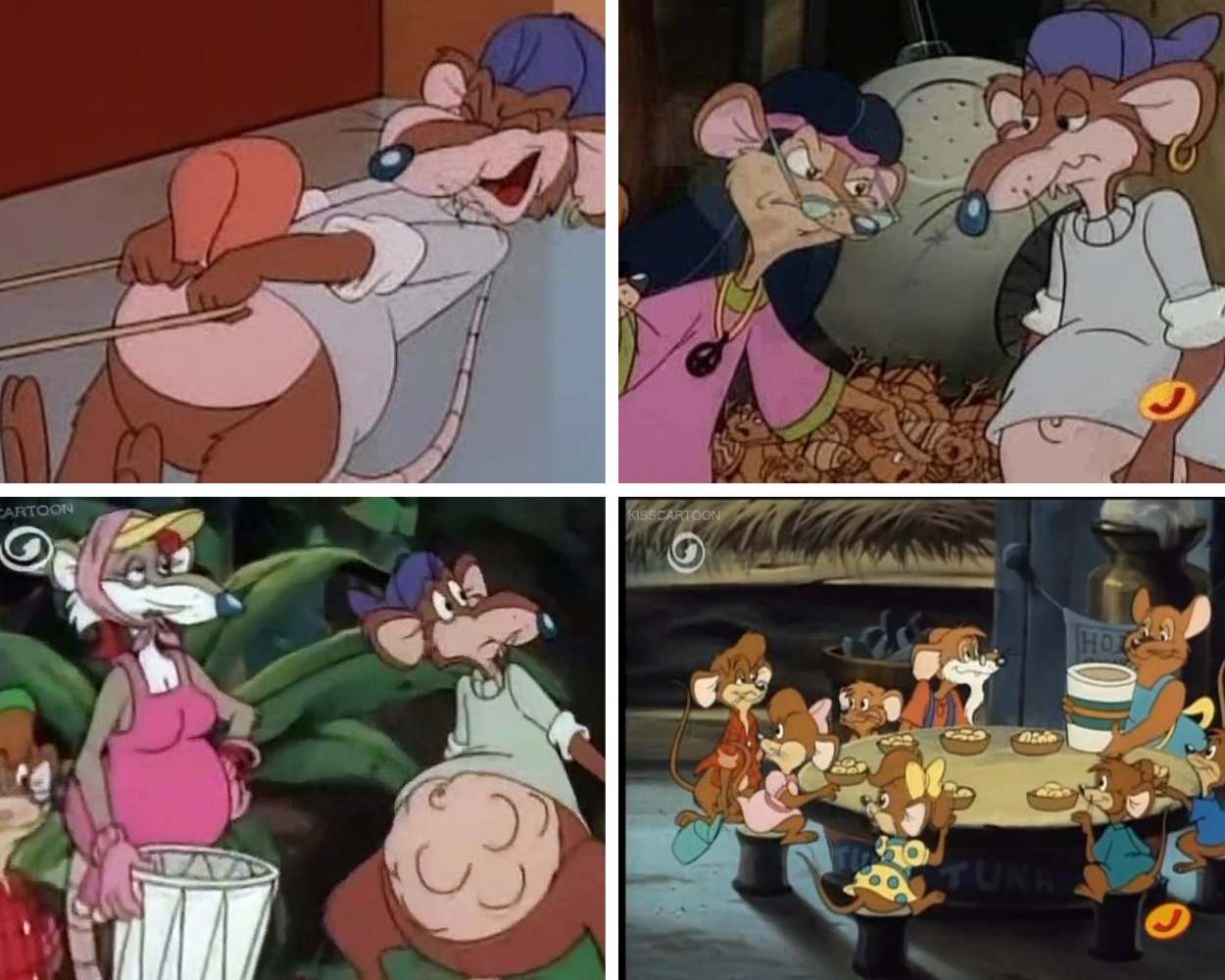
“Capitol Critters” spins a tale of Max the mouse’s White House adventures, but here’s the scoop in bite-sized morsels:
- Max, a farm mouse, navigates White House life post-tragedy.
- The cast: a motley crew of vermin tackling grown-up issues like politics and vice.
- Not kid-friendly: dives into deep themes, from segregation to substance abuse.
- Boasts voice talents like Bobcat Goldthwait and Frank Welker.
- Critics weren’t charmed, leading to a short initial run.
- Overshadowed by “The Simpsons,” it saw only 7 episodes air on ABC.
- Cartoon Network gave it a second chance in 1995.
34I Am Weasel (1997- 2000)
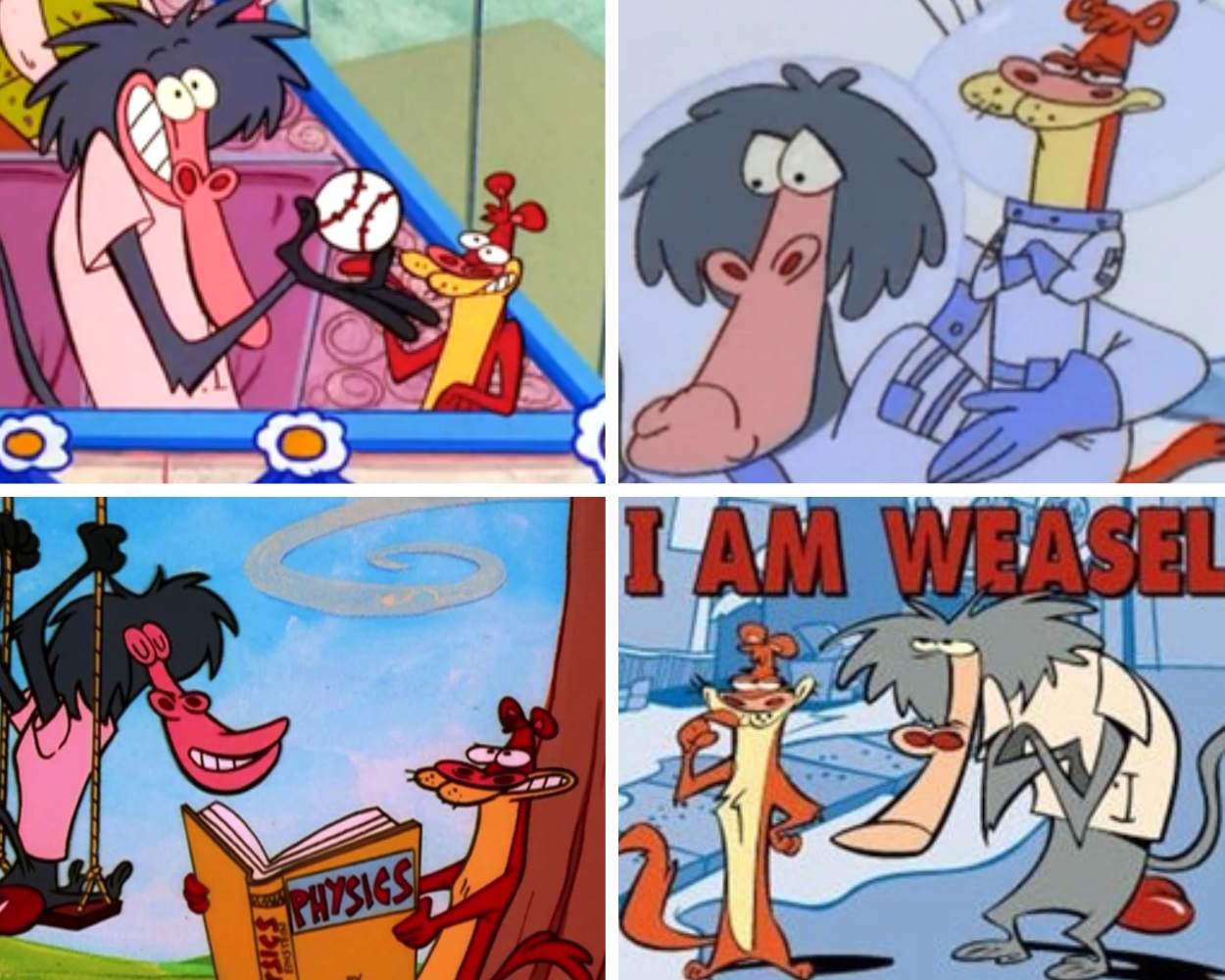
“I Am Weasel” hilariously chronicles the escapades of rivals I.M. Weasel and I.R. Baboon, with a quick rundown below:
- Born from “Cow and Chicken,” it features a smart weasel and a determined baboon.
- Show’s lifeblood: the constant, witty banter and Baboon’s attempts to outdo Weasel.
- Enjoyed robust ratings in the late 90s.
- David Feiss’s creation, a frontrunner of “Cartoon Cartoons” to compete with Nicktoons.
- A quirky gem of Cartoon Network’s lineup.
33The Pirates Of Dark Water (1991 – 1993)
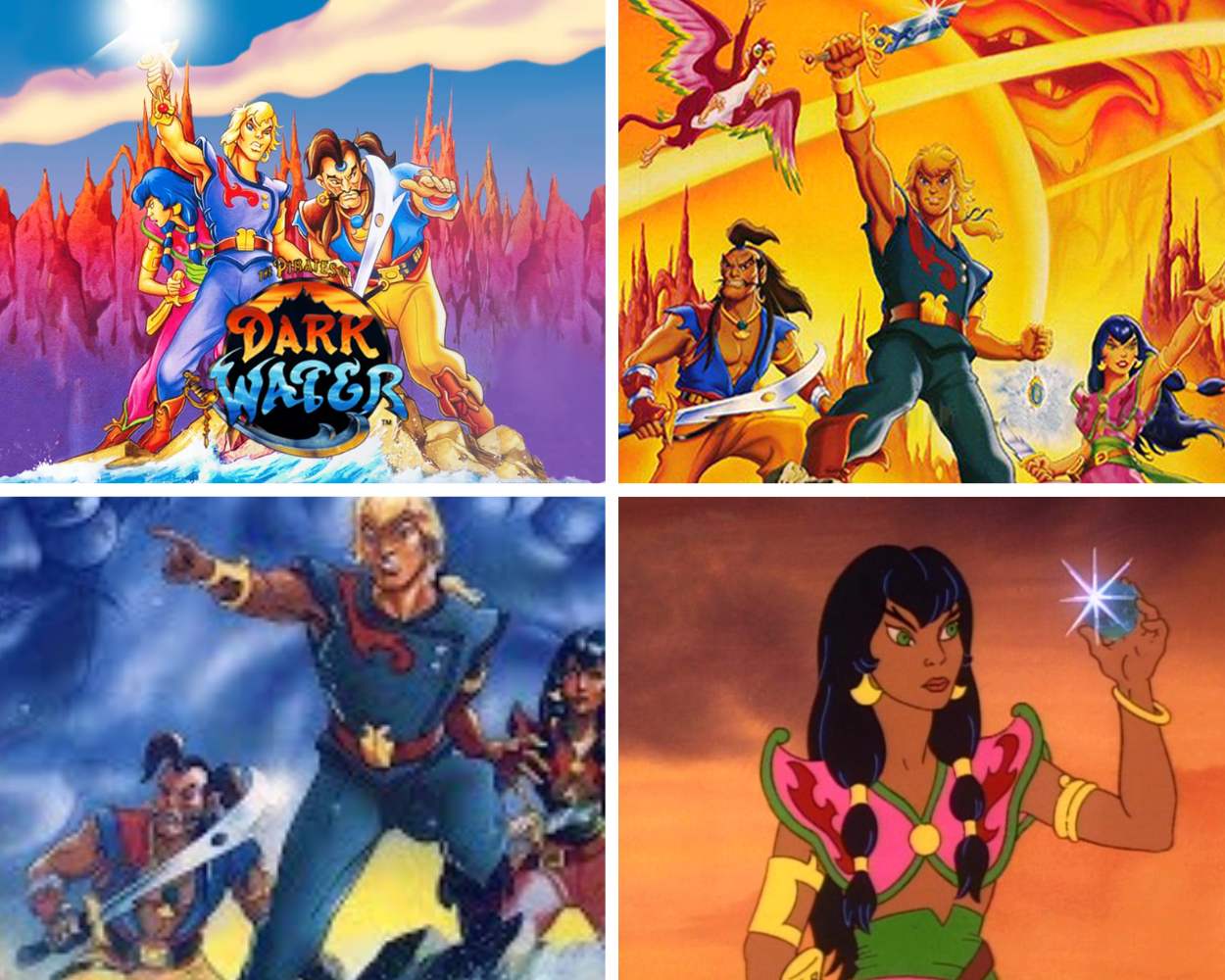
“Dark Water, The Pirates Of Dark Water” set sail as a miniseries and charted a course into the weird 90s cartoons as a full series, with these notable details:
- It’s an odyssey through an alien, aquatic realm menaced by the sinister Dark Water.
- Hero Ren and his eclectic crew quest for Thirteen Treasures of Rule to save their world.
- Highlights: Rich character arcs, captivating story, and a creative universe.
- The adventure was cut short; only eight treasures were found before cancellation.
- Legacy: Spawned a video game and action figures.
- Remains alive in the hearts of a loyal fanbase advocating for a revival.
32Samurai Pizza Cats (1990 – 1991)
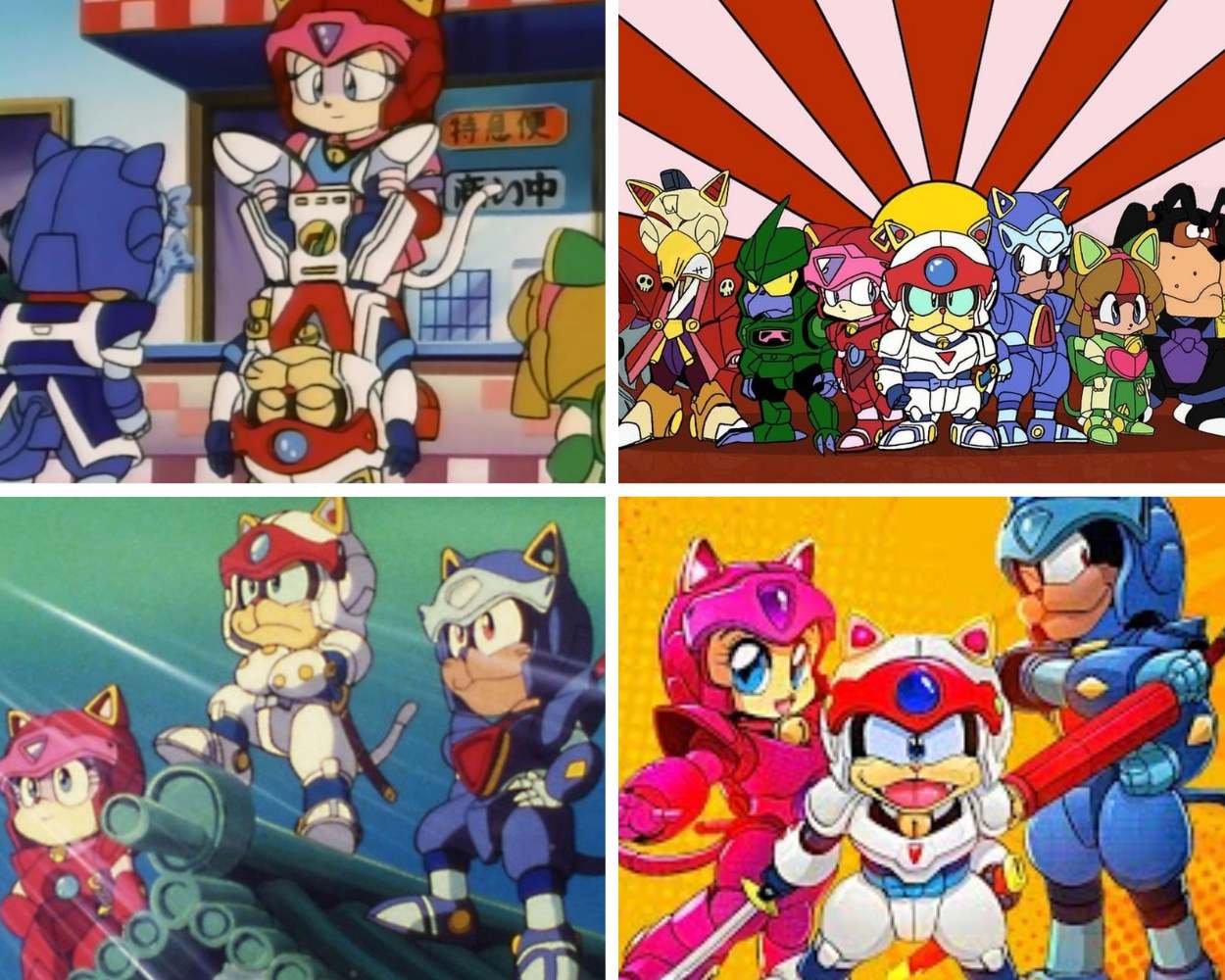
In the anime from the 1990s, “Samurai Pizza Cats” distinguished itself with its cheeky humor, and here’s the slice-by-slice breakdown:
- Originally “Kyatto Ninden Teyandee,” it hit translation snags for Western viewers.
- Saban Entertainment’s fix: A complete dialogue overhaul for the English dub.
- Reimagined as a superhero spoof, the show follows armored feline samurai.
- Double life: Pizza chefs by day, Little Tokyo’s saviors from Big Cheese by night.
- Became a cult classic with its bold approach to adaptation and parody.
31Aaahh!!! Real Monsters (1994 – 1997)
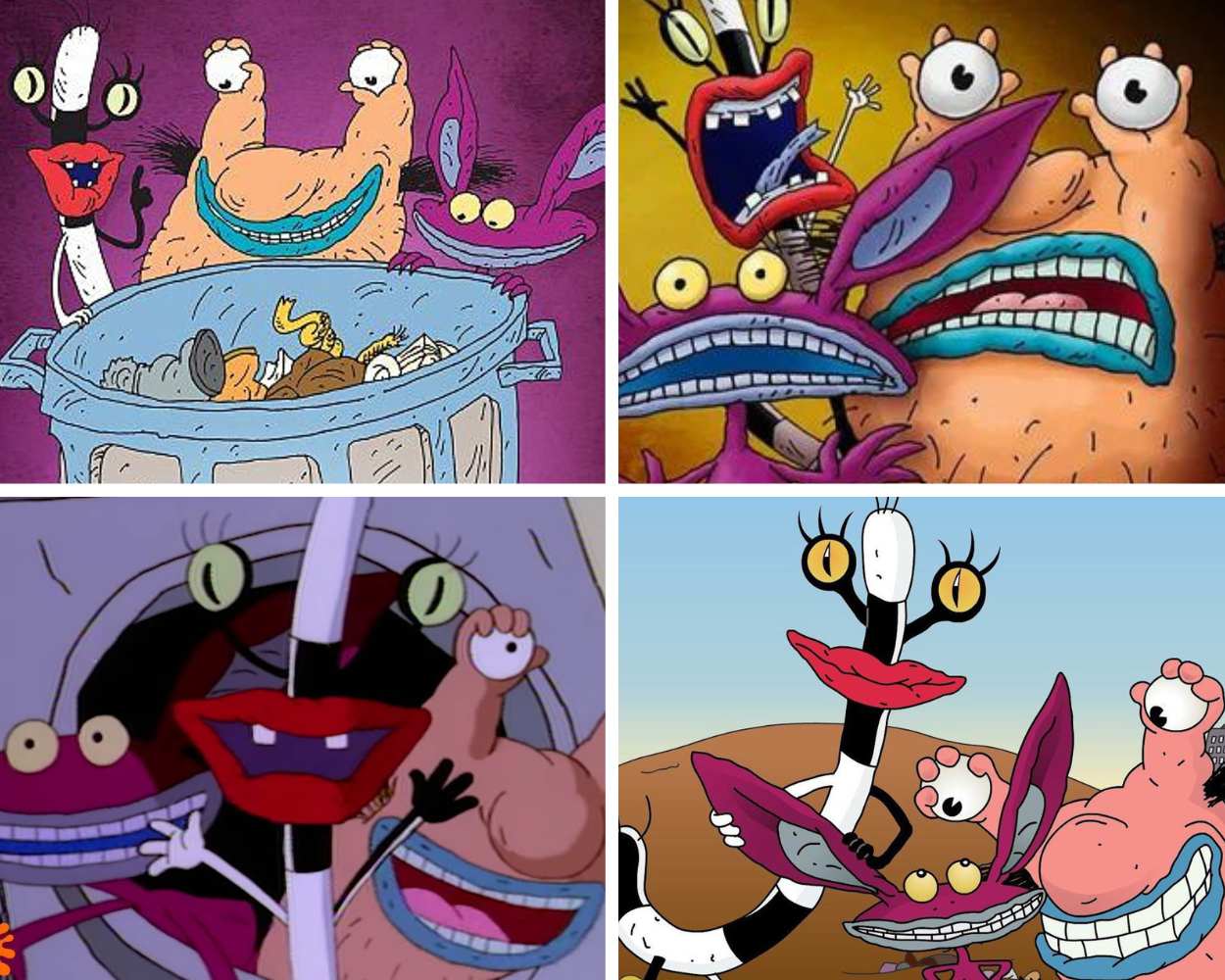
“Aaahh!!! Real Monsters” introduces a hidden monster world beneath our cities, focusing on three young monsters honing their scare skills, with key points to note:
- 90s cartoons: where monsters learn the scare trade in secret.
- Central trio: Ickis, Oblina, Krumm – each with unique terror talents.
- Comedy gold: A mix of physical gags, snappy dialogue, and clever wordplay.
- Its strangeness adds to the charm, making viewers cackle with glee.
- Animation style: Bold, distorted designs that capture the essence of its monster cast.
- Niche appeal: A standout show for those who savor the odd and imaginative.
30Cow and Chicken (1997 – 1999)
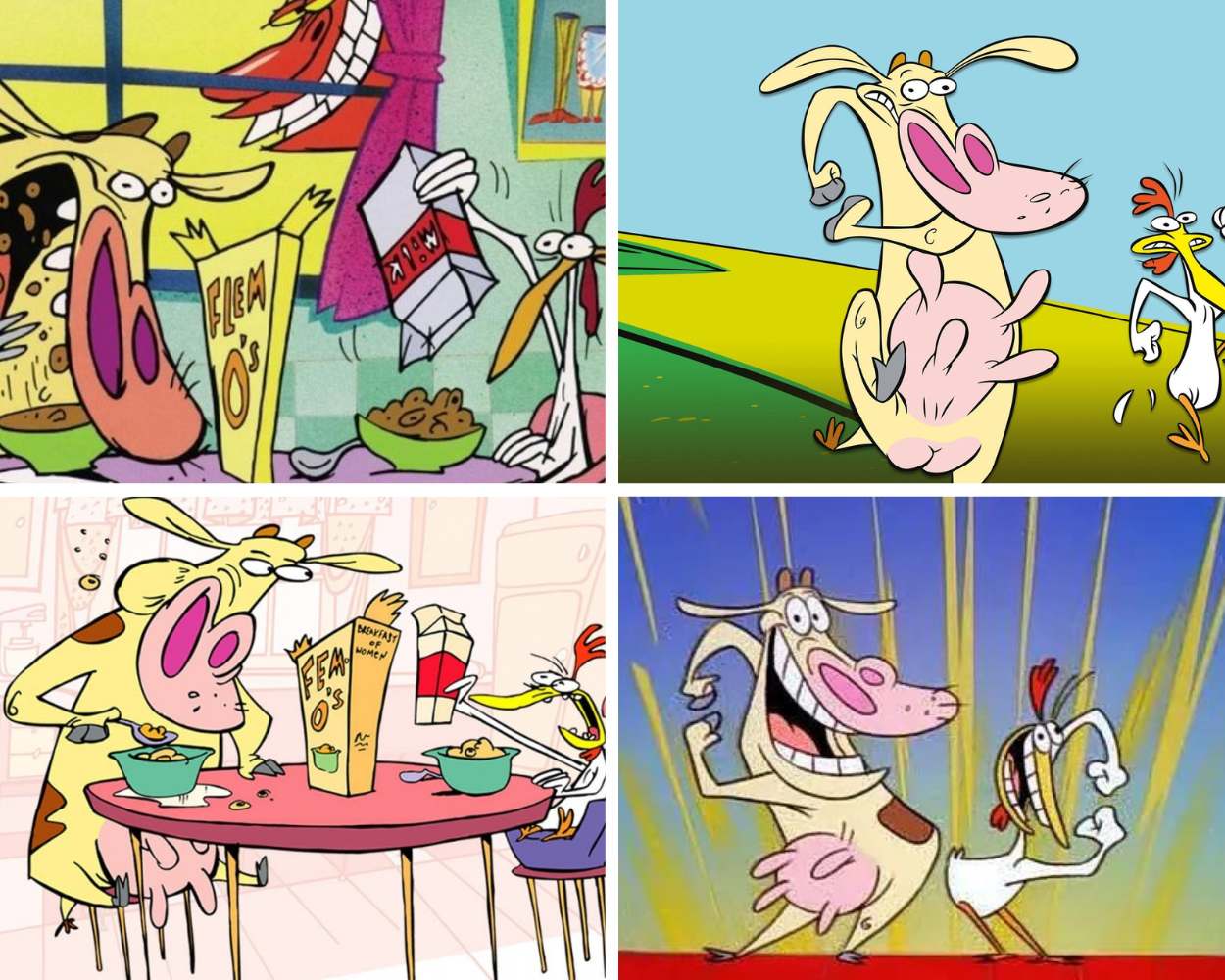
“Cow and Chicken,” first seen on “I Am Weasel,” whimsically chronicles the antics of a pair of sibling animals, and here’s the lowdown:
- Focuses on Cow, a wide-eyed 7-year-old, and Chicken, her world-weary 11-year-old brother.
- Known for its raw, absurd comedy, heavily featuring rear-end gags.
- Masterfully mixes humor for adults and kids.
- Enjoyed a prime Cartoon Network slot, entertaining audiences throughout the late ’90s.
29The Mask ( 1995 – 1997)
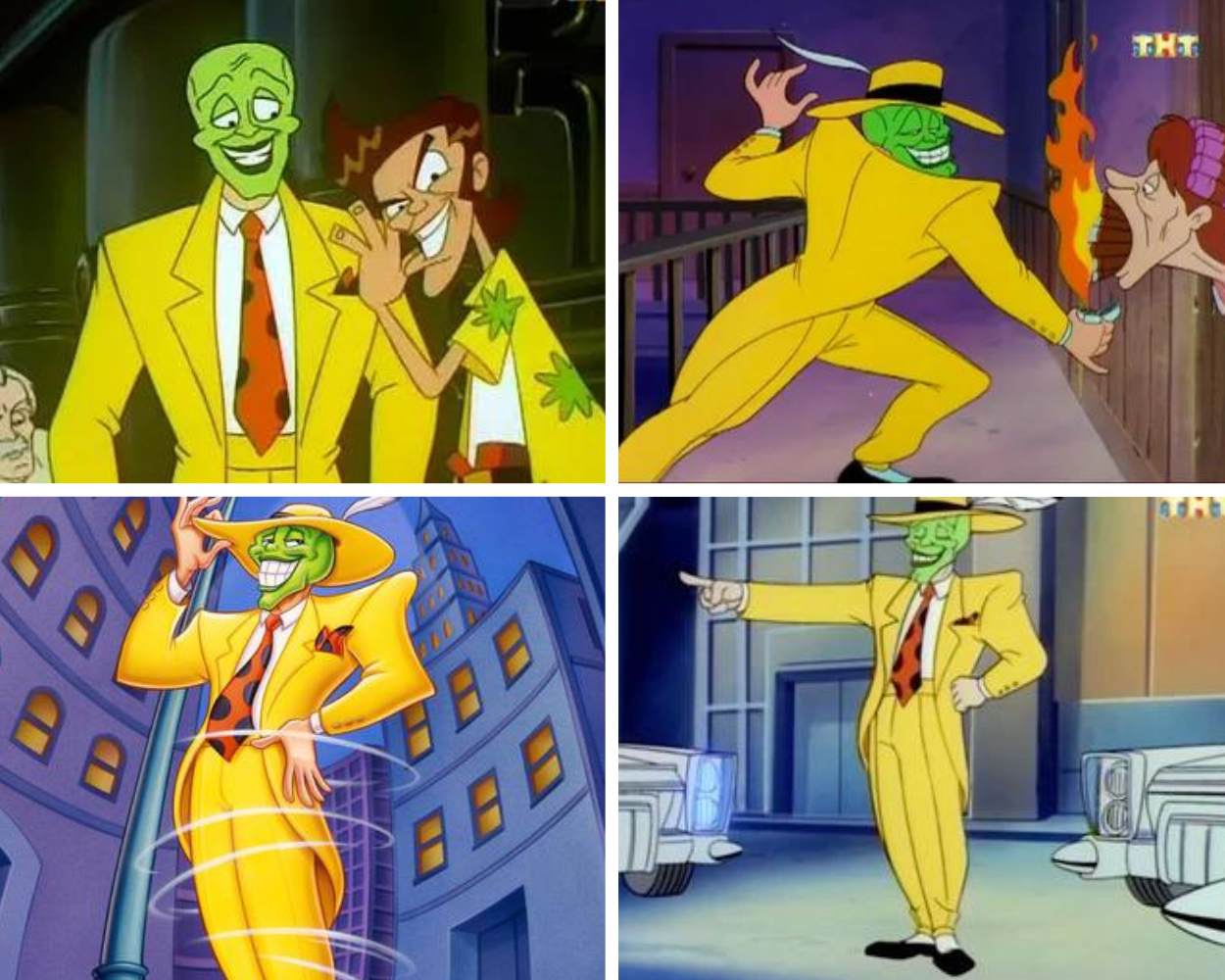
The ’90s were a time when Jim Carrey’s hit films didn’t just break box office records, they spawned Saturday morning cartoons like “The Mask: Animated Series,” and here’s the wacky wrap-up:
- Spun from the 1994 blockbuster, featuring Stanley Ipkiss’s zany superhero life.
- Screen life: Graced CBS from ’95 to ’97, later syndicated and Cartoon Network reruns.
- Despite the Dark Horse Comic’s grim roots, the show tickled funny bones, kid-style.
- Embraced a Looney Tunes flair for 54 episodes, dodging the serious for the slapstick.
- Managed to bottle Carrey’s kinetic chaos within kid-friendly confines.
Remember, kids, with great power comes great irresponsibility!
28Wild C.A.T.s (1994–1995)
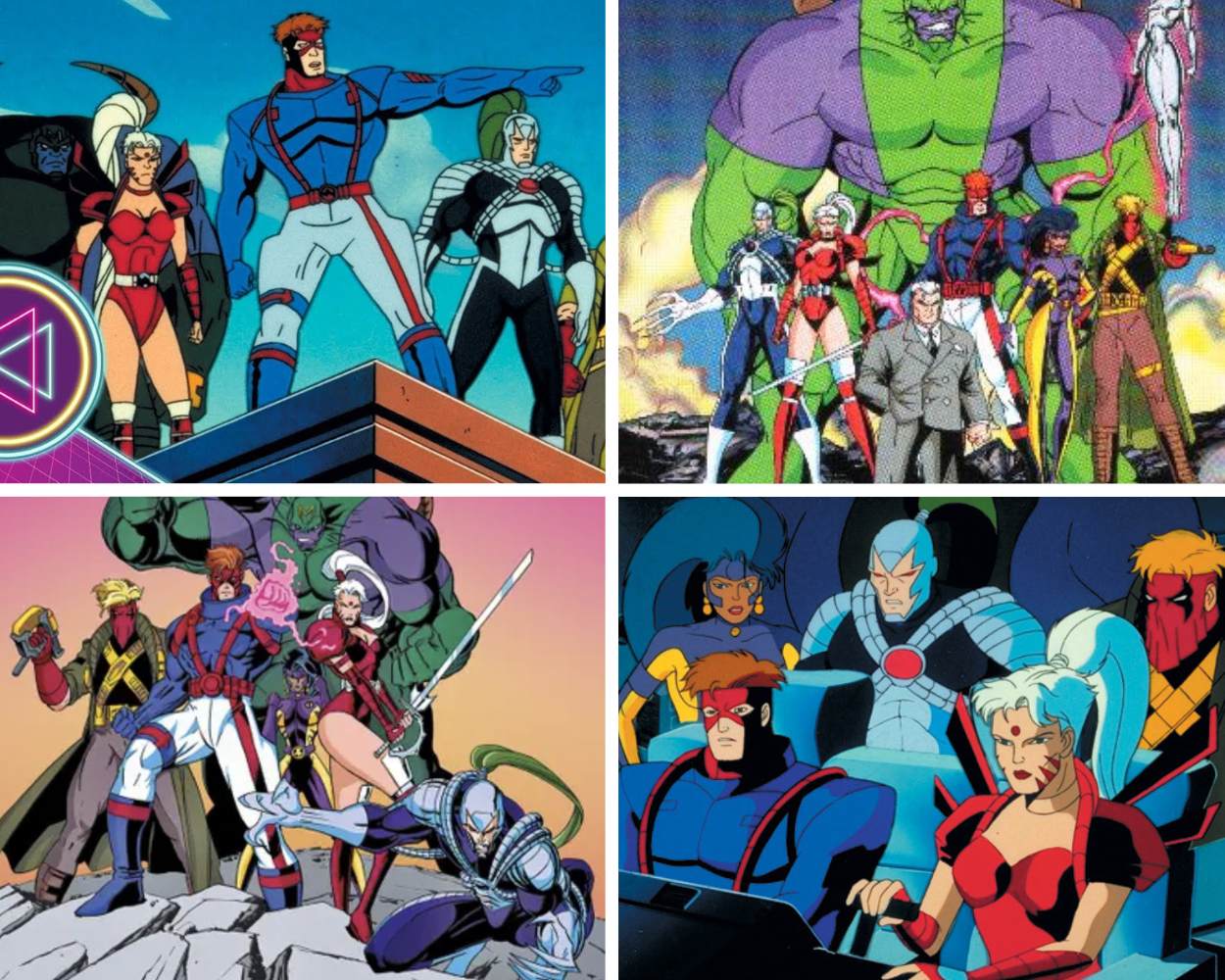
Launched in 1994, WildC.A.T.s, a sci-fi saga based on a comic series of the same name, captivates with top-notch art, expert voice actors, and an exciting opening theme.
Exuding 1990s charm with bandoliers, long ponytails, and constant guitar riffs, the show was abruptly canceled after 13 episodes, likely because of the ending of its shared animation block, Action Zone.
Inspiring a Super Nintendo game and a toy line, the show’s simplified adaptation of the comic appeals to budding superhero fans and younger viewers. If given a contemporary makeover, WildC.A.T.s could excel today without contending with the 1990s juggernaut, X-Men: The Animated Series.
27Beavis and Butt-Head (1993 -1997)
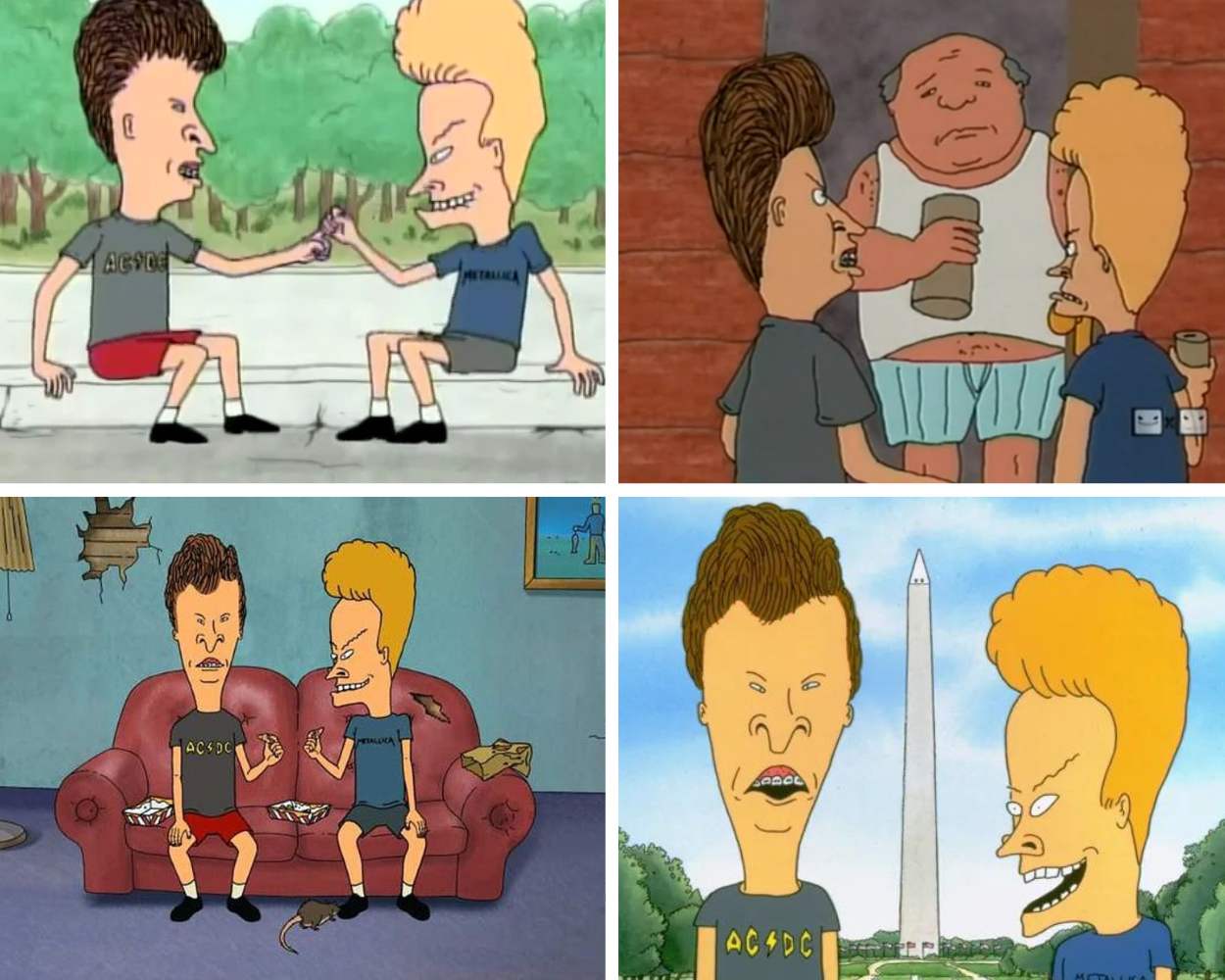
Beavis and Butt-Head, an audacious cartoon loved by Gen X and younger millennials, featured two indifferent teens watching music videos on their couch long before such a pastime became mainstream. Shortly after its debut, the crass but now classic show transformed into a cultural phenomenon.
Mike Judge, the show’s creator, scored a big hit and later created King of the Hill and Silicon Valley, not to mention several top ’90s movies including Beavis and Butt-Head Do America. He now spearheads a Beavis and Butt-Head reboot on Paramount+, which kicked off last year.
26Johnny Bravo (1997 – 2004)
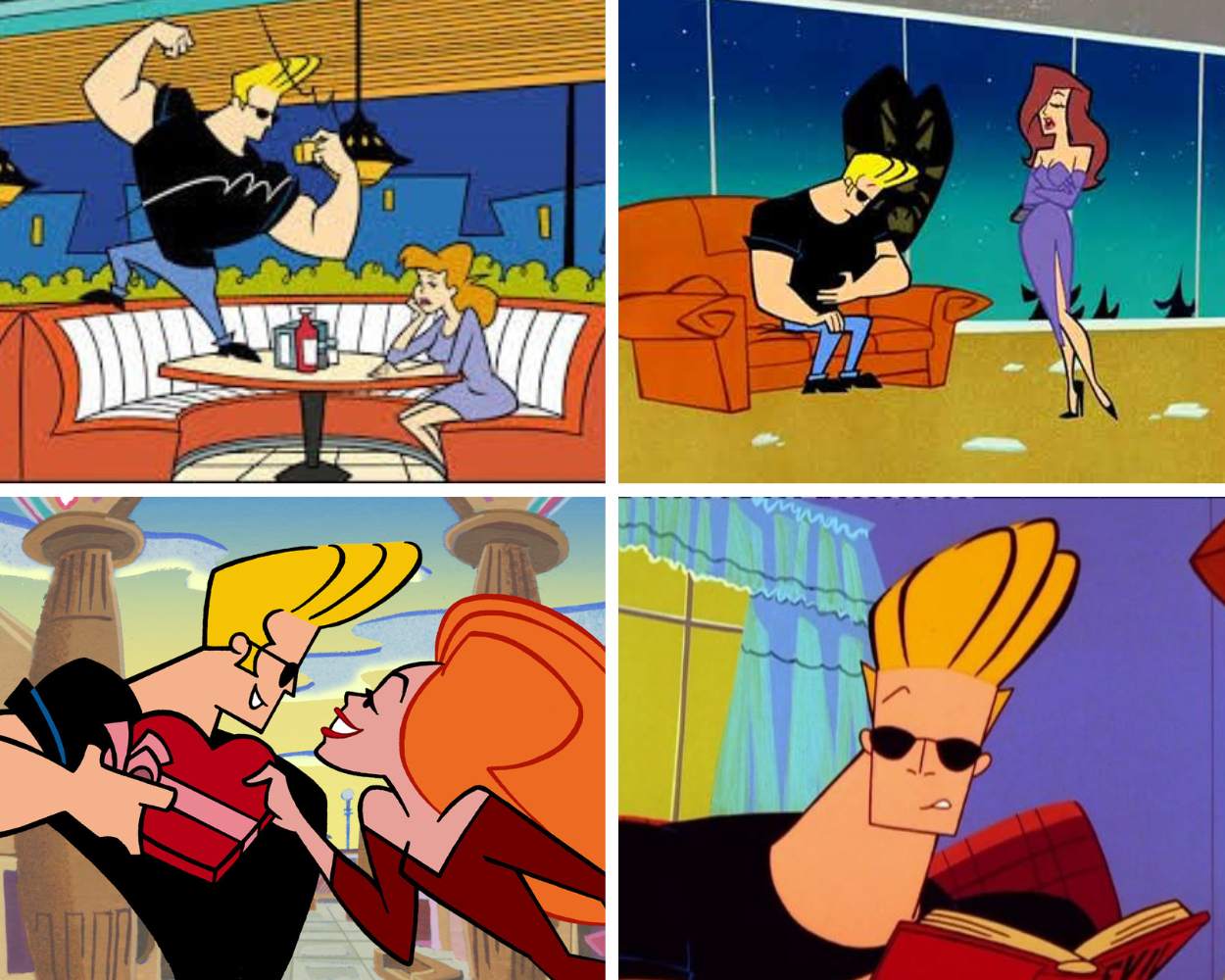
Cartoon Network has always spotlighted its male stars, from the Eds to Finn and Jake. In 1995, Johnny Bravo, a character who blended elements of Elvis Presley and James Dean, burst onto TV screens with confidence and cockiness. However, he never succeeded in winning over the ladies.
The show, Johnny Bravo, revolved around a simple concept: Johnny’s overconfidence consistently led him to fail in his attempts to woo girls, and often landed him in bizarre situations. It’s worth noting that the show played a significant role in launching the careers of notable animators like Seth MacFarlane and Butch Hartman.
25Bucky O’Hare and the Toad Wars (1991)
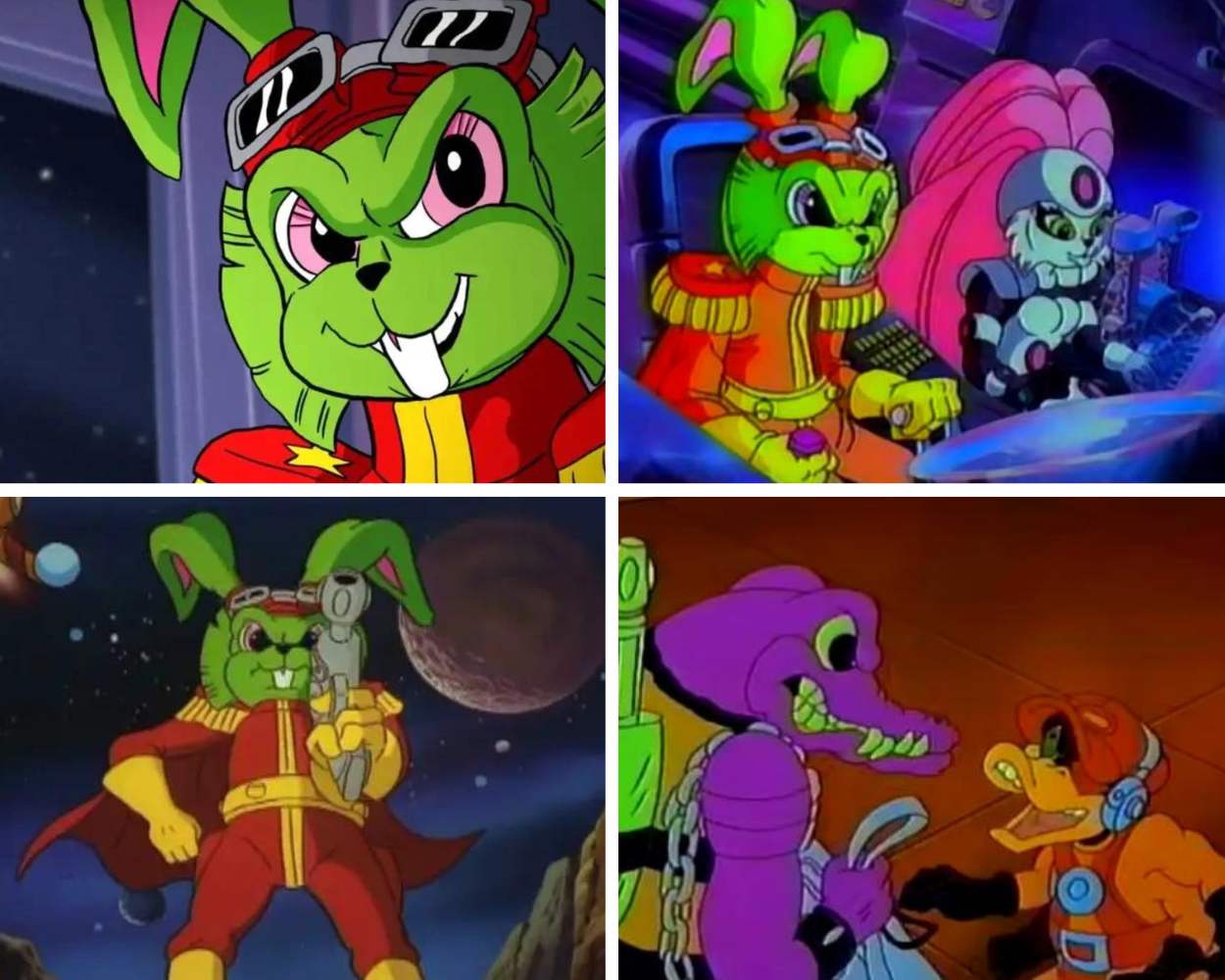
Commanding The Righteous Indignation, a spacecraft, Captain Bucky O’Hare combats the evil Toad Empire in his namesake cartoon. The show, featuring vibrant anthropomorphic animal characters with superpowers and one human boy who unintentionally lands into Bucky’s universe, aired for only 13 episodes in 1991.
Yet, its memorable video games, catchy theme song, and action-packed intro that introduced the characters left a mark. Despite its short run and an in-demand toy line that saw a re-release years later, the series was not renewed, but diehard fans still cherish Bucky O’Hare’s adventures.
24Rocko’s Modern Life (1993 – 1996)
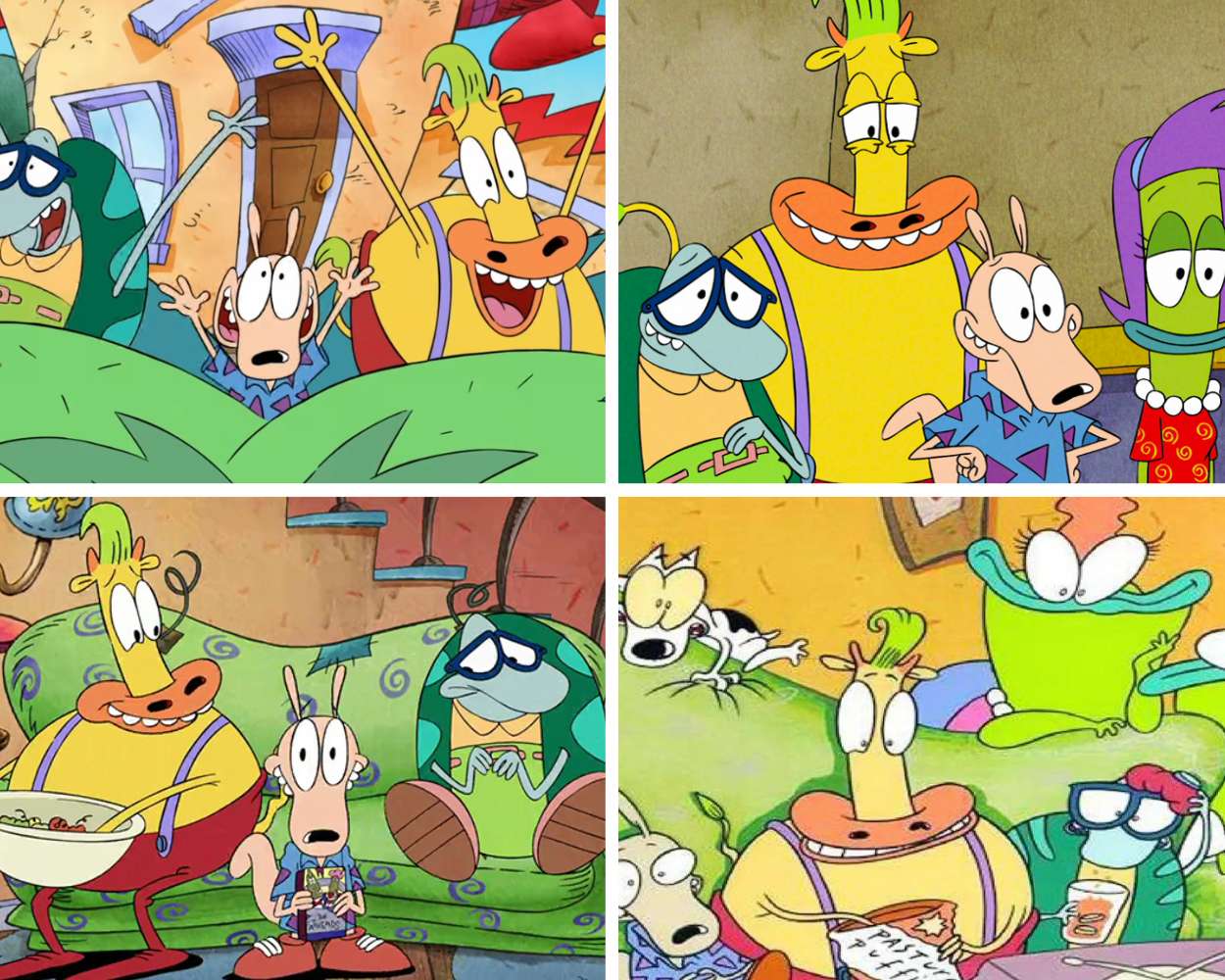
While Bluey stands as today’s quintessential Australian cartoon character on television, a wallaby named Rocko held this title back in 1992, taking the spotlight in Rocko’s Modern Life. This Nickelodeon cartoon attracted a cult following in the early 90s, despite controversies surrounding its adult humor in a children’s show.
Upon migrating from Australia to the United States, Rocko adopts a cynical outlook while mastering the art of “adulting.” Together with his quirky companions, a yellow bovine named Heffer and a tortoise named Filburt, this much-adored wallaby navigates the trials of life.
23Dog City (1992 – 1994)
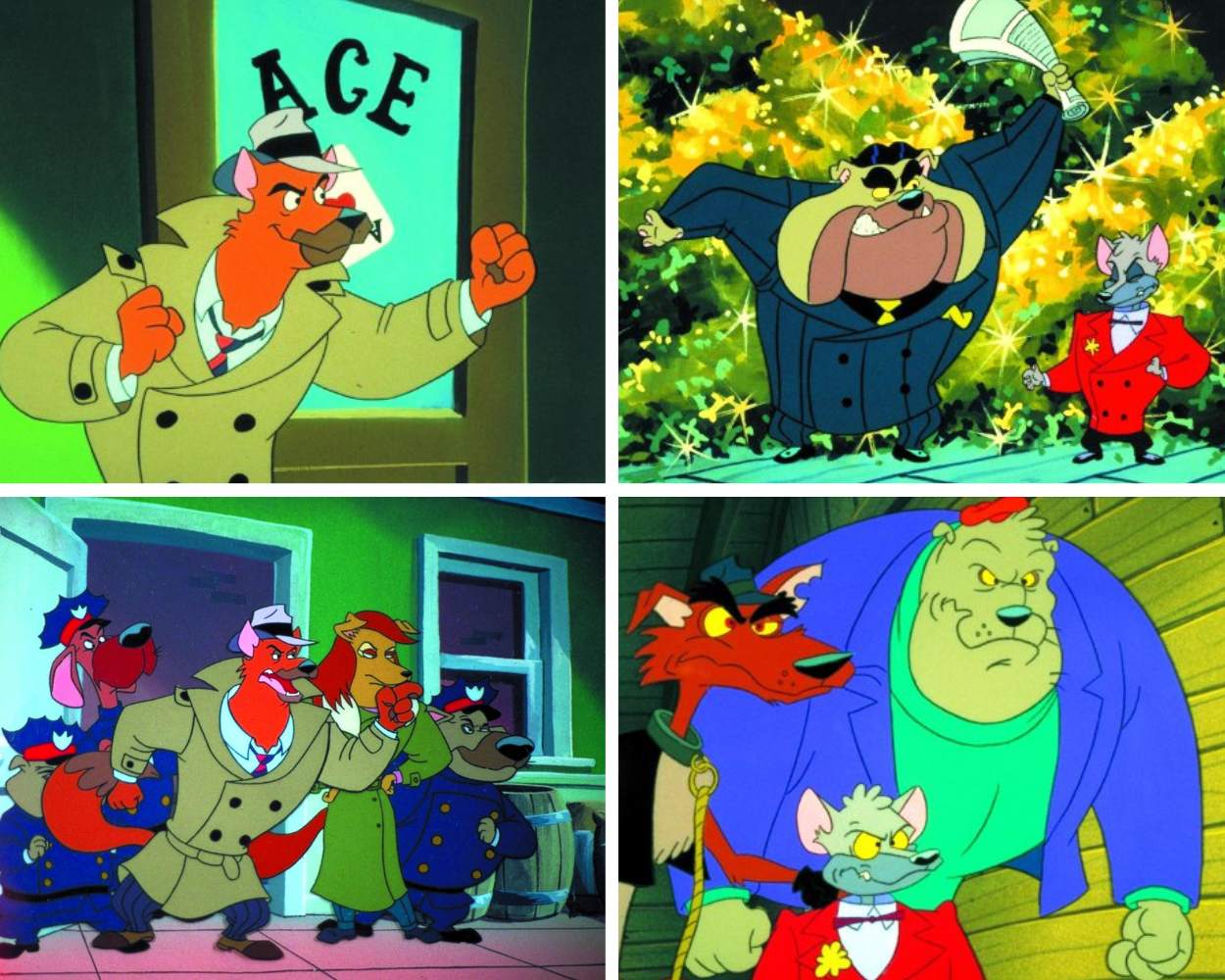
Dog City revolves around the escapades of Ace Hart, a German Shepard private investigator raised by Chinese Pekingese parents, who defends Dog City from bulldog mob boss Bugsy Vile.
The show creatively depicts Ace Hart as the creation of animator Eliot Shag, the lead character of the Muppet segments, thereby smoothly integrating the two parts of the show. Garnering generally favorable reviews from critics and viewers alike, Dog City earned accolades for its innovative concept of a cartoon and its animator interacting and experiencing parallel plots in the cartoon and the “real” world.
22The Wild Thornberrys (1998 – 2004)
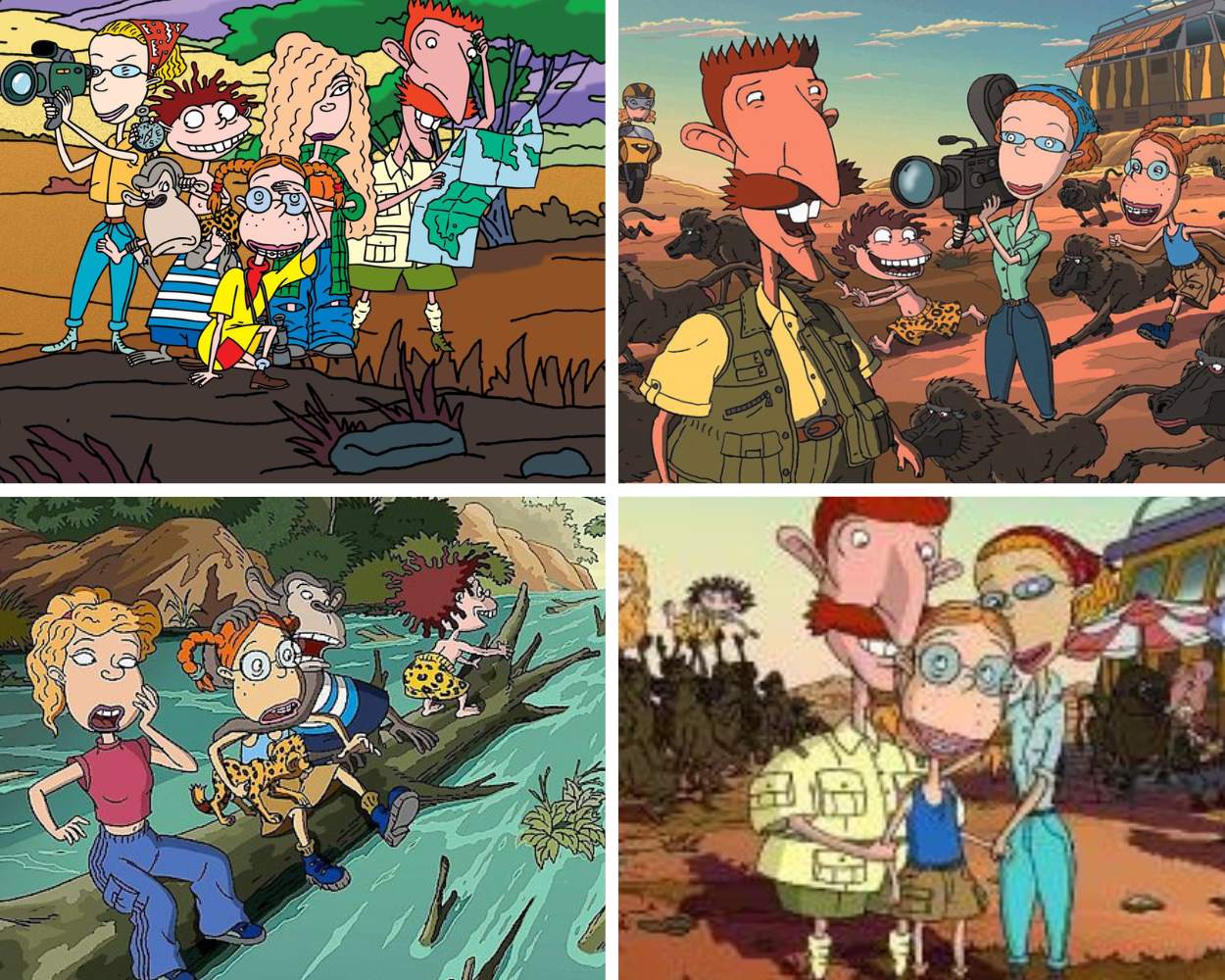
During the era when Nickelodeon shows like Rugrats and Hey Arnold! Focused on groups of friends, The Wild Thornberrys introduced a fresh perspective on the modern family for five seasons. It even led to a television movie and a crossover with Rugrats.
The Wild Thornberrys showcased the adventures of a family who journeyed across the globe to create wildlife documentaries. This family consisted of quirky parents Nigel and Marianne, a wild child son voiced by Flea, the bassist of Red Hot Chili Peppers, and Eliza, a character voiced by the young Lacey Chabert.
21The Angry Beavers (1997 – 2001)
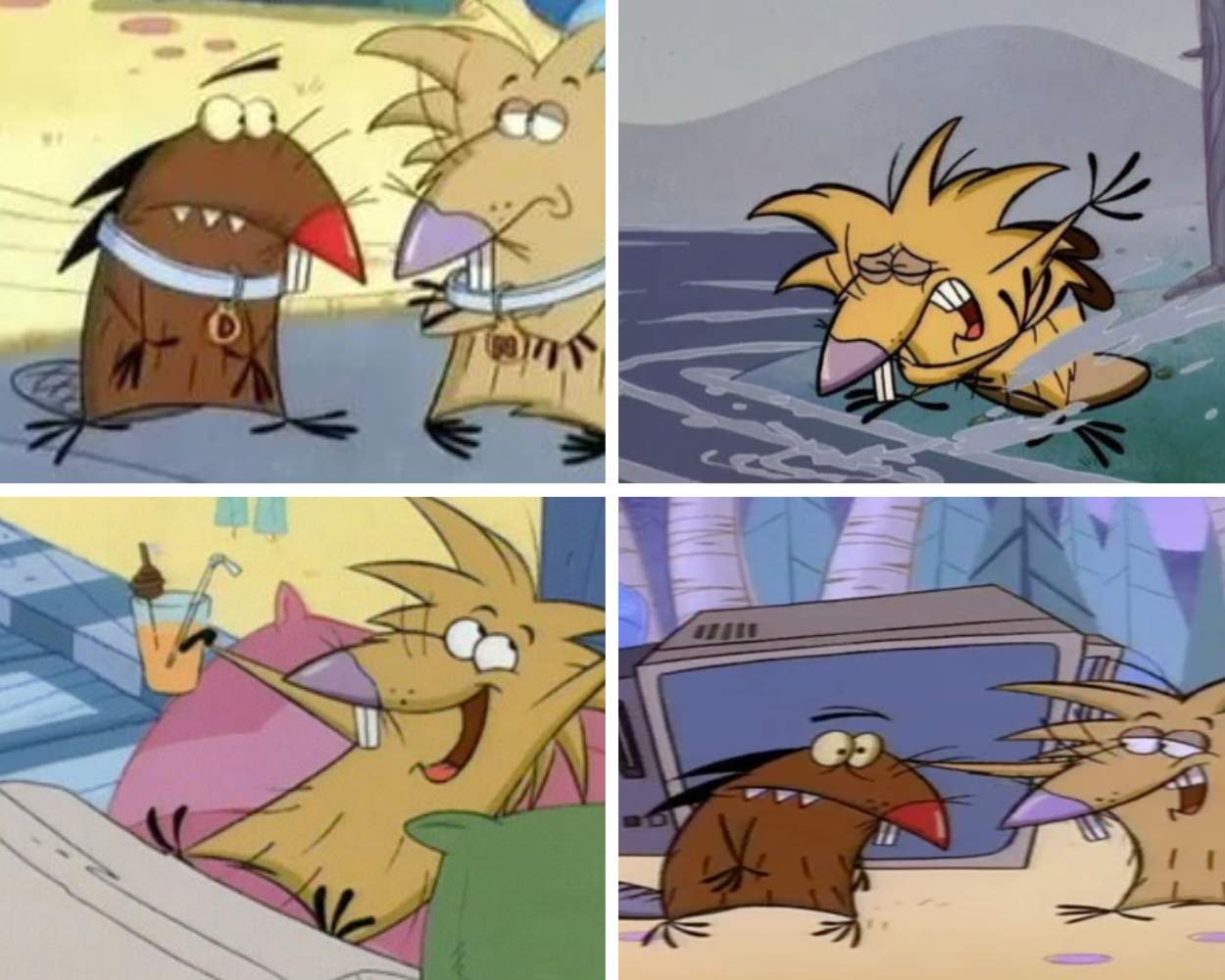
In 1997, The Angry Beavers hit Nickelodeon airwaves and enjoyed a five-season run. Notably, it was the last series produced by Gunther-Wahl Productions Inc. An original final episode, which Vice reported was supposed to reveal the beavers learning about their show’s cancellation and facing their demise, made the show a hot topic.
The Angry Beavers spotlighted two beaver brothers – the brown Daggett and the yellow Norbert. They departed from their home to embrace a bachelor lifestyle. Still, instead of freedom, they often found themselves stirring up trouble with an array of eccentric characters, including witches, government scientists, and a Mexican luchador.
20Courage the Cowardly Dog (1999 – 2002)
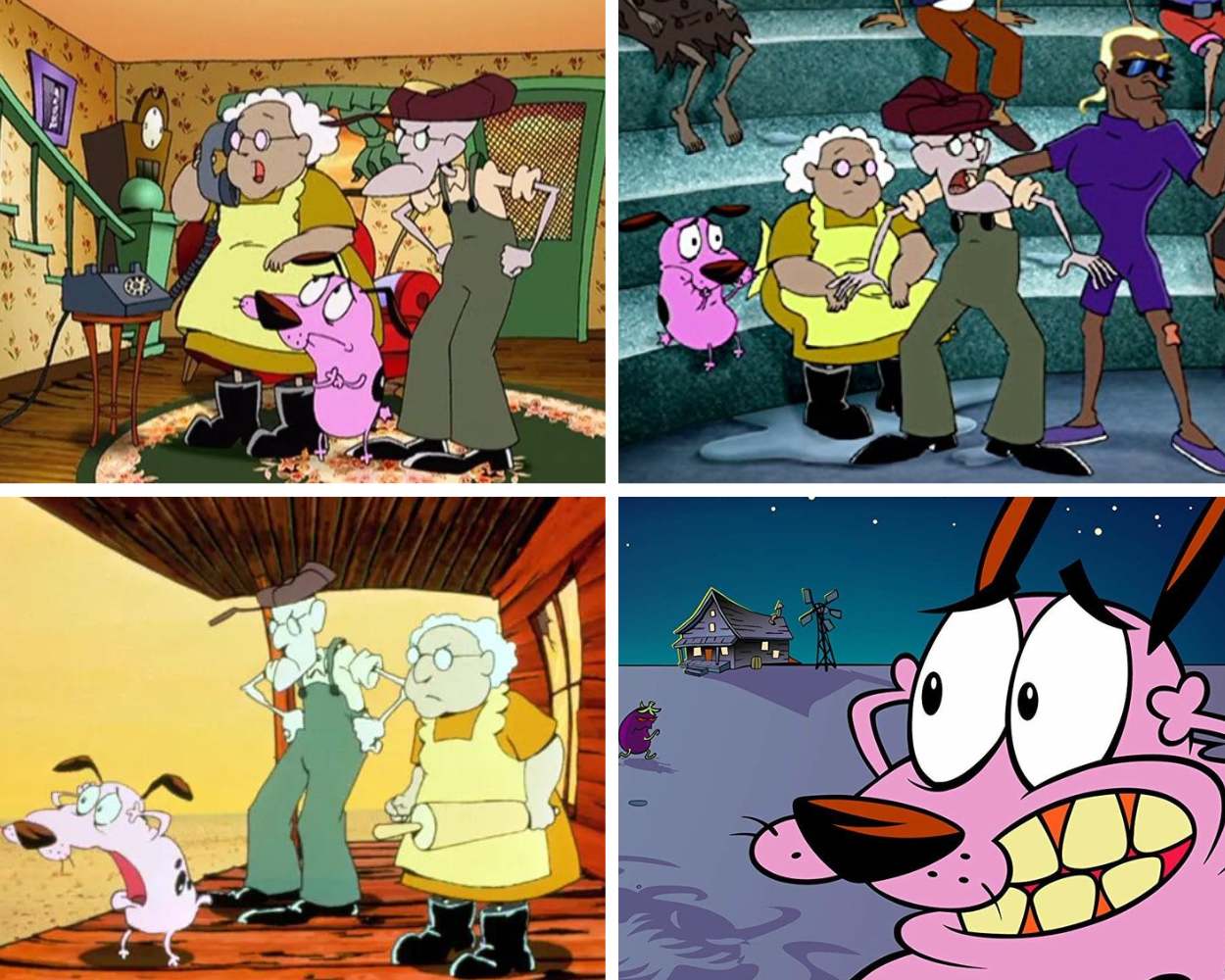
In the late ’90s, Cartoon Network excelled with original cartoons, with Courage the Cowardly Dog emerging as an icon. The series follows Courage, a lovable yet timid dog, voiced by Marty Grabstein, who lives with kind-hearted Muriel and her mean husband, Eustace.
Strange occurrences challenge Courage to protect his family despite their home’s remote location. Renowned for its horror and sci-fi elements, this unique and timeless series intertwines humor with suspense, maintaining its freshness even today.
19Earthworm Jim (1995 – 1996)
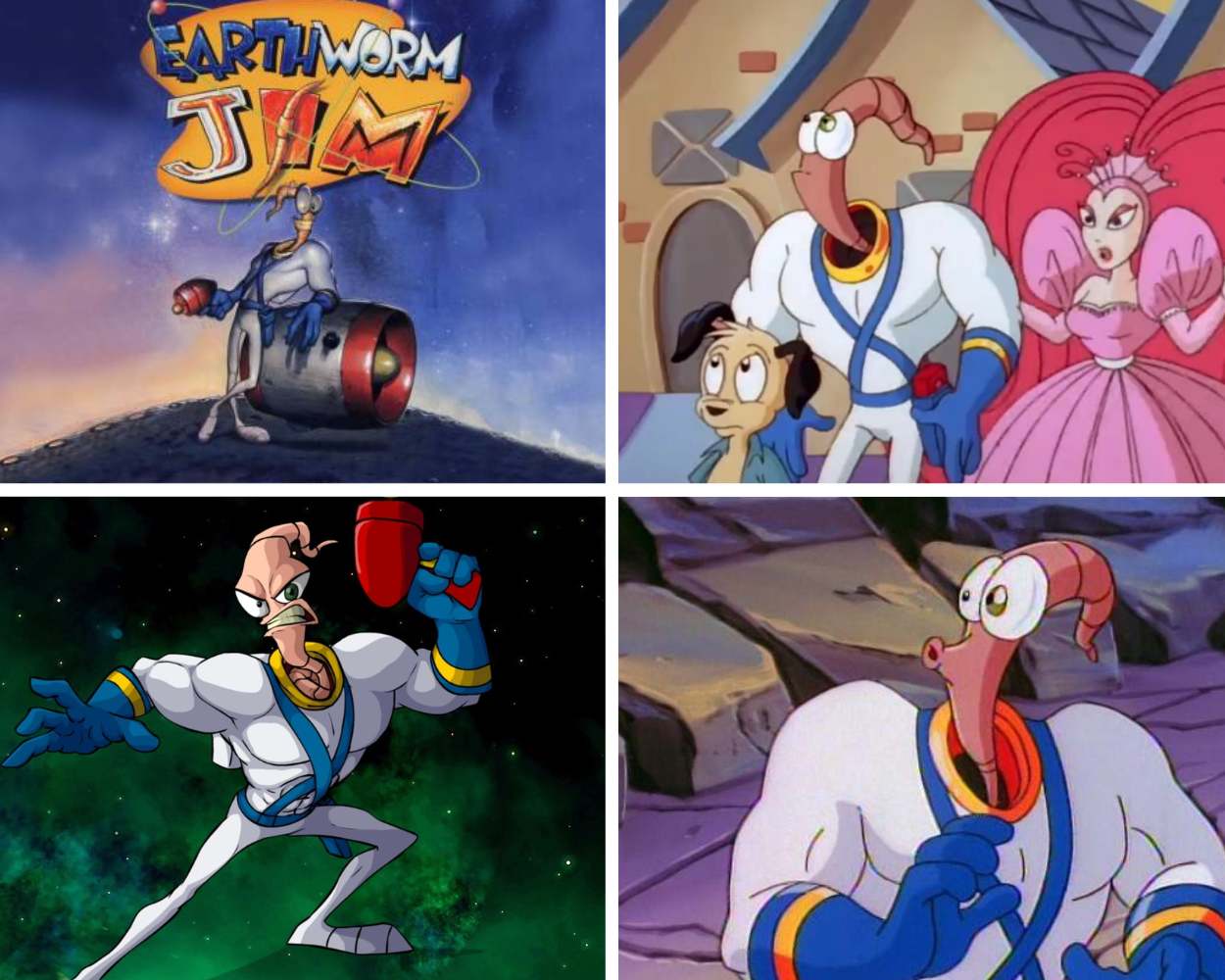
Inspired by the successful video game series, the cartoon Earthworm Jim features the adventures of an earthworm who stumbles upon a potent suit and commits to saving the universe from evil. His companion, Peter Puppy, an anthropomorphic dog, transforms into a monster when injured or frightened, reminiscent of a dog-like Hulk.
The series, celebrated for its remarkably wacky and anachronistic animation and storylines, chronicles Jim’s galactic journeys, heroic feats, and his pursuit of his love interest, Princess Whats-Her-Name. Even though the show has ended, Earthworm Jim continues to thrive in other media.
18The Mighty Ducks (1996 – 1997)
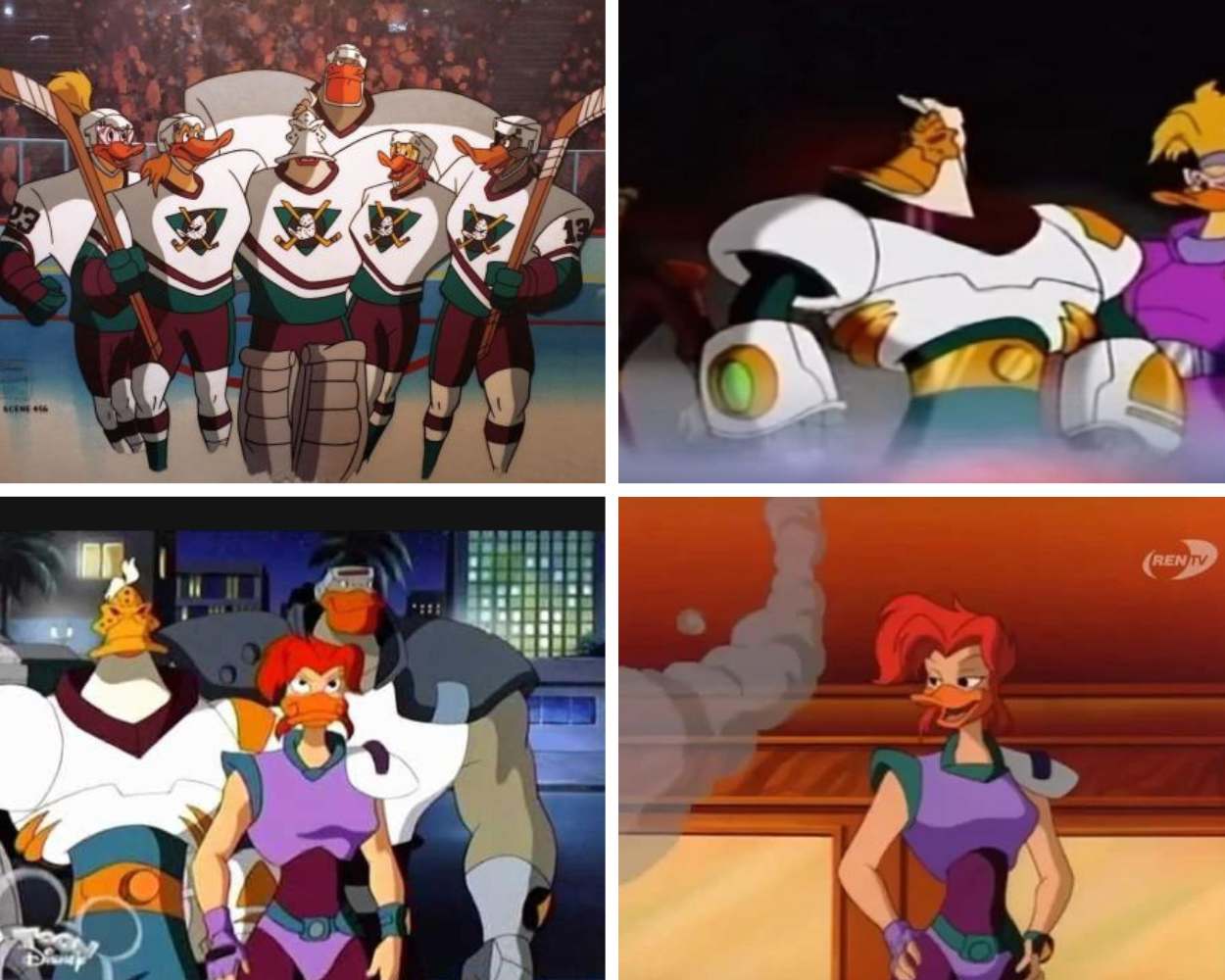
The Mighty Ducks Animated Series draws loosely – and we stress ‘loosely’ – from the 1992 comedy-drama sports film about an underdog team named The Mighty Ducks. It’s worth noting that this adaptation sports one of the oddest foundations for any mainstream animated series.
Instead of a hockey team, The Mighty Ducks transform into a band of half-human, half-duck superheroes. Equipped with powers and futuristic technology from a planet called Puckworld, they combat a reptilian alien threat with a legendary goalie mask. Meanwhile, they also double as a genuine NHL team, apparently unfazed by the prospect of employing humanoid ducks.
17Biker Mice From Mars (1993 – 1996)
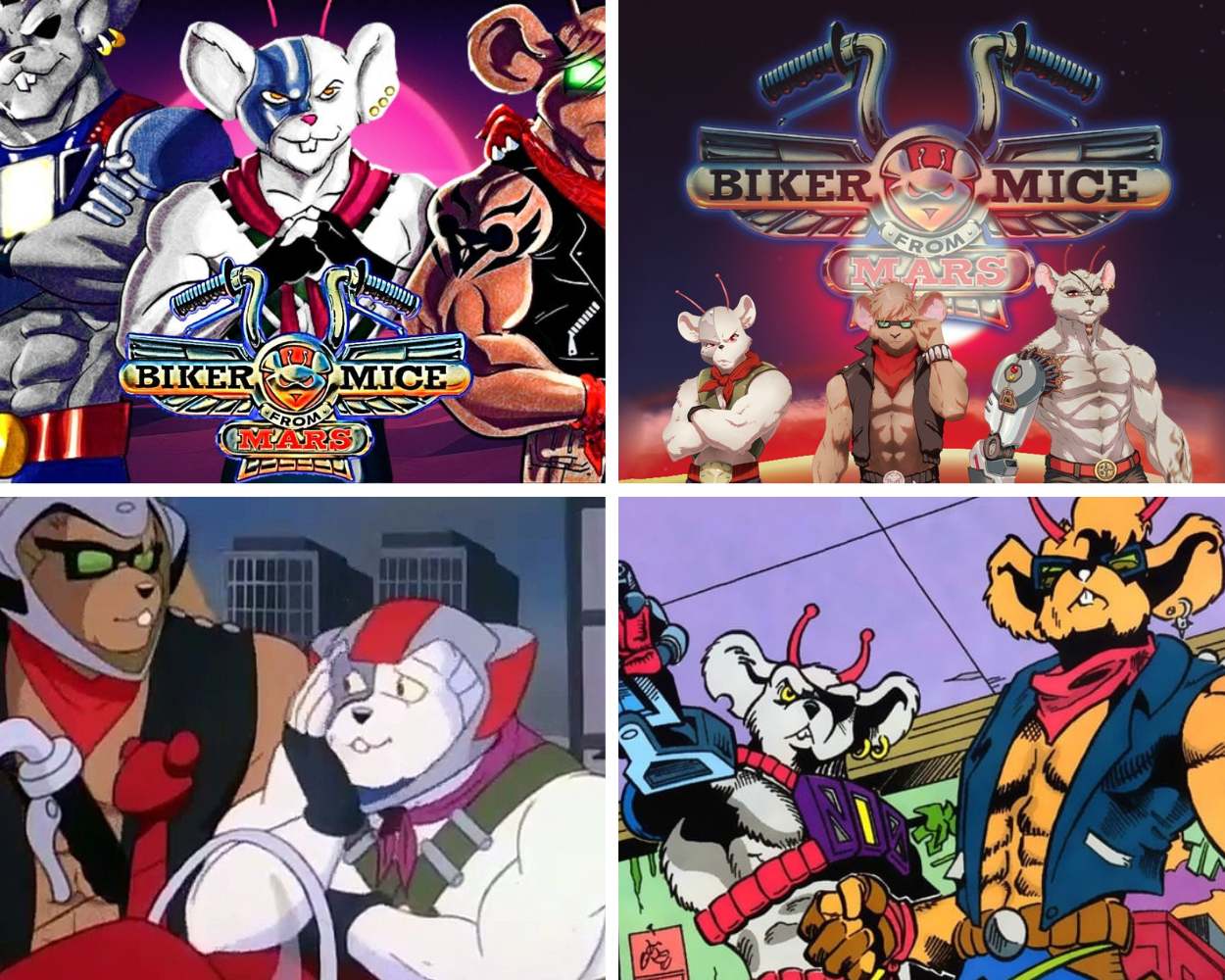
“Biker Mice from Mars” totally tubularized the ’90s, revving up to ride the radical wave of “Teenage Mutant Ninja Turtles,” and here’s the 411:
- Stars a trio of rad rodent rebels: Throttle, Modo, and Vinnie.
- From Mars to Earth: they skedaddled from interplanetary warfare to protect our turf from the gnarly Plutarkians.
- Played it by the book with ’90s censorship: all showdowns are non-gory, with baddies being robots, creatures, or extraterrestrials.
- Merch was all that and a bag of chips, spawning action figures and a video game with Snickers tie-ins.
So keep your helmets on, dudes and dudettes, these mice are still cruising through our “totally awesome” memories!
16Pepper Ann (1997 – 2000)
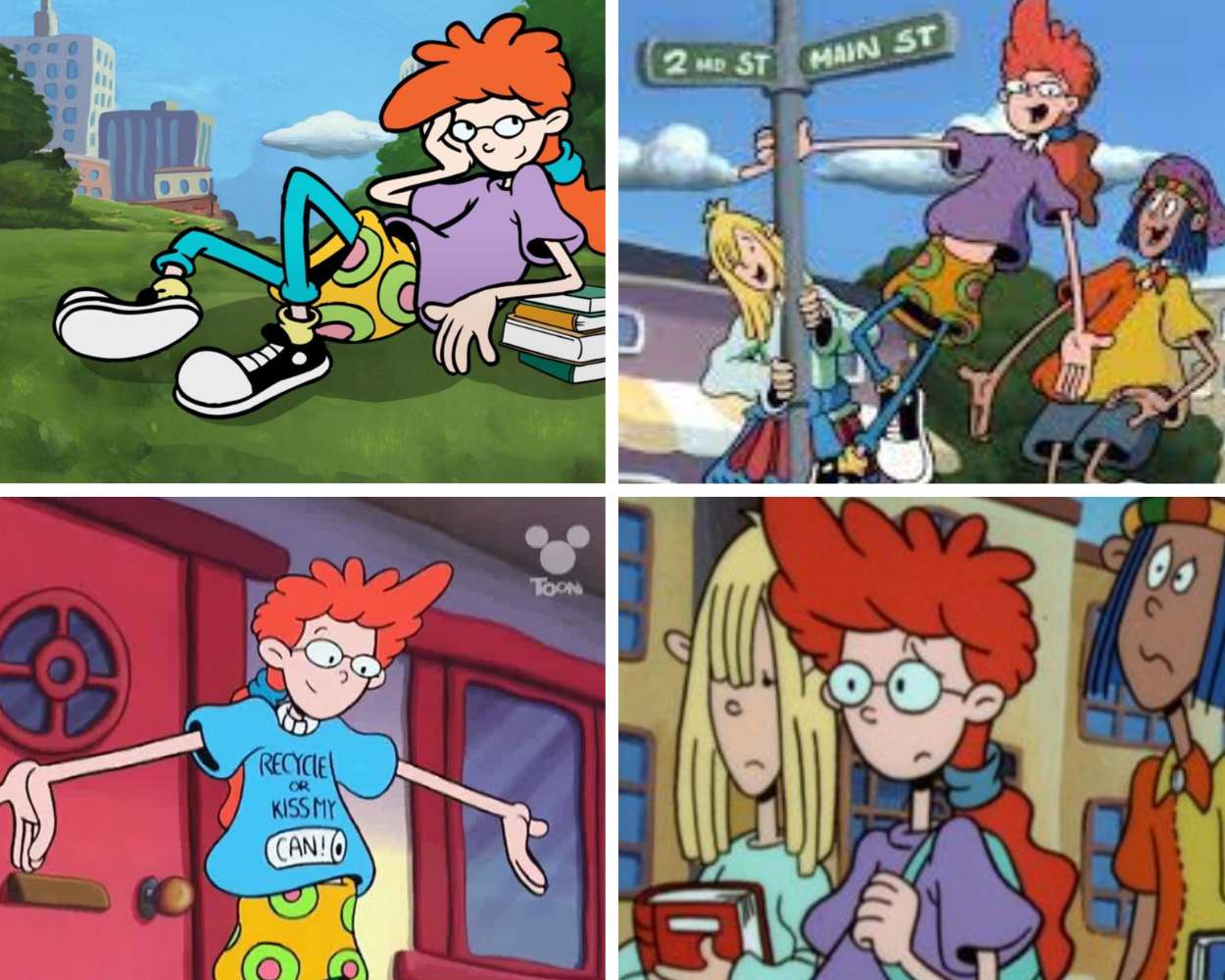
Before the era of Lizzie McGuire and iCarly, young girls found a role model in Pepper Ann, the animated teenager headlining the One Saturday Morning series. Significantly, this series made history as the first animated Disney show created by a woman.
The series revolved around Pepper Ann, an awkward teenager, as she navigated the complexities of friendships, growing up, and interacting with boys during her middle school years. Known for her unique style, nerdy personality, and vibrant, red hair, Pepper Ann, alongside her best friends Milo and Nicky, made a strong impression.
15CatDog (1998 – 2005)
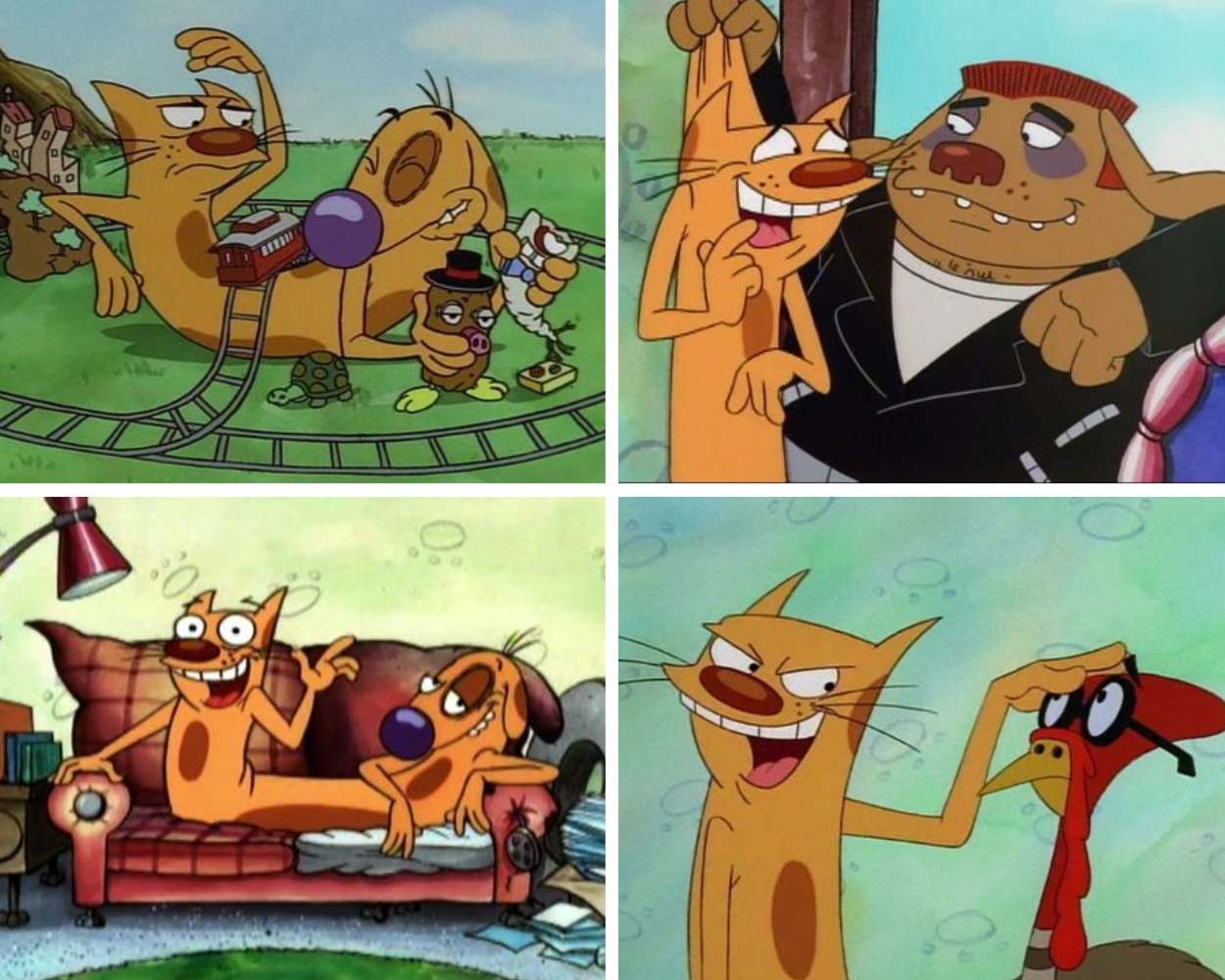
Even if you’ve forgotten about Nickelodeon’s CatDog, chances are its catchy and unforgettable theme song remains etched in your memory. From 1998 through 2005, CatDog spent four seasons on the channel, introducing an innovative twist to the typical cat-dog rivalry through its conjoined main characters.
The show charted the journey of the unique, yellow-colored cat and dog siblings who resided in their distinctive half-dog bone, half-fish-shaped house. Each sibling pursued a different lifestyle: Cat, the intelligent and scheming feline, and Dog, the simple-minded and fun-loving canine, creating a captivating contrast and endless source of entertaining conflicts.
14Freakazoid! 1995
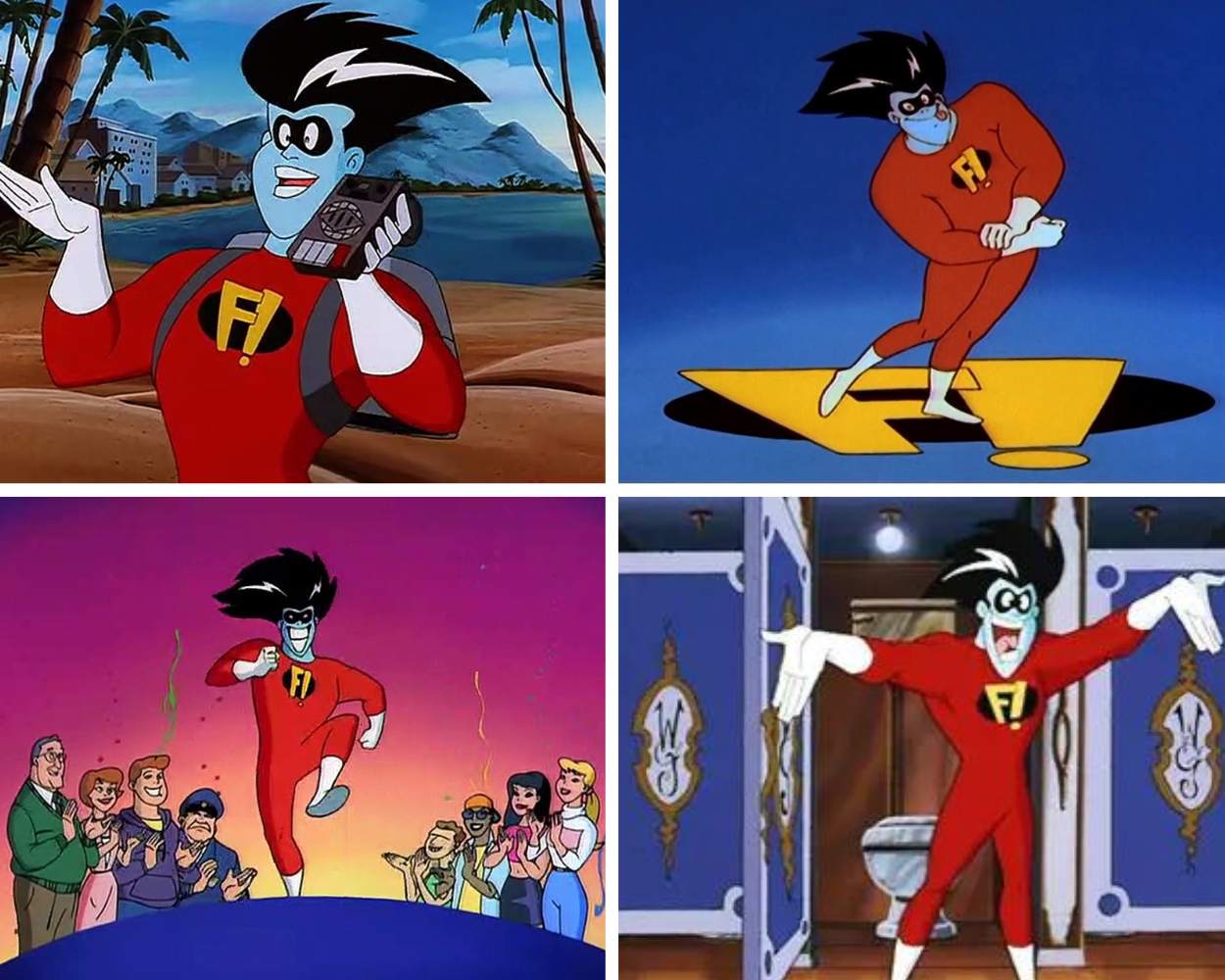
Millennials fond of peculiar trivia will recall Freakazoid, the quirky superhero that filled the Saturday-morning cartoon slot. Debuted in 1995, the show followed Dexter, an awkward teenager, as he morphed into a zany crime fighter, resonating with many of us. Even though Freakazoid only aired for two seasons, it continues to trigger a strong sense of nostalgia.
13Road Rovers (1996 – 1997)
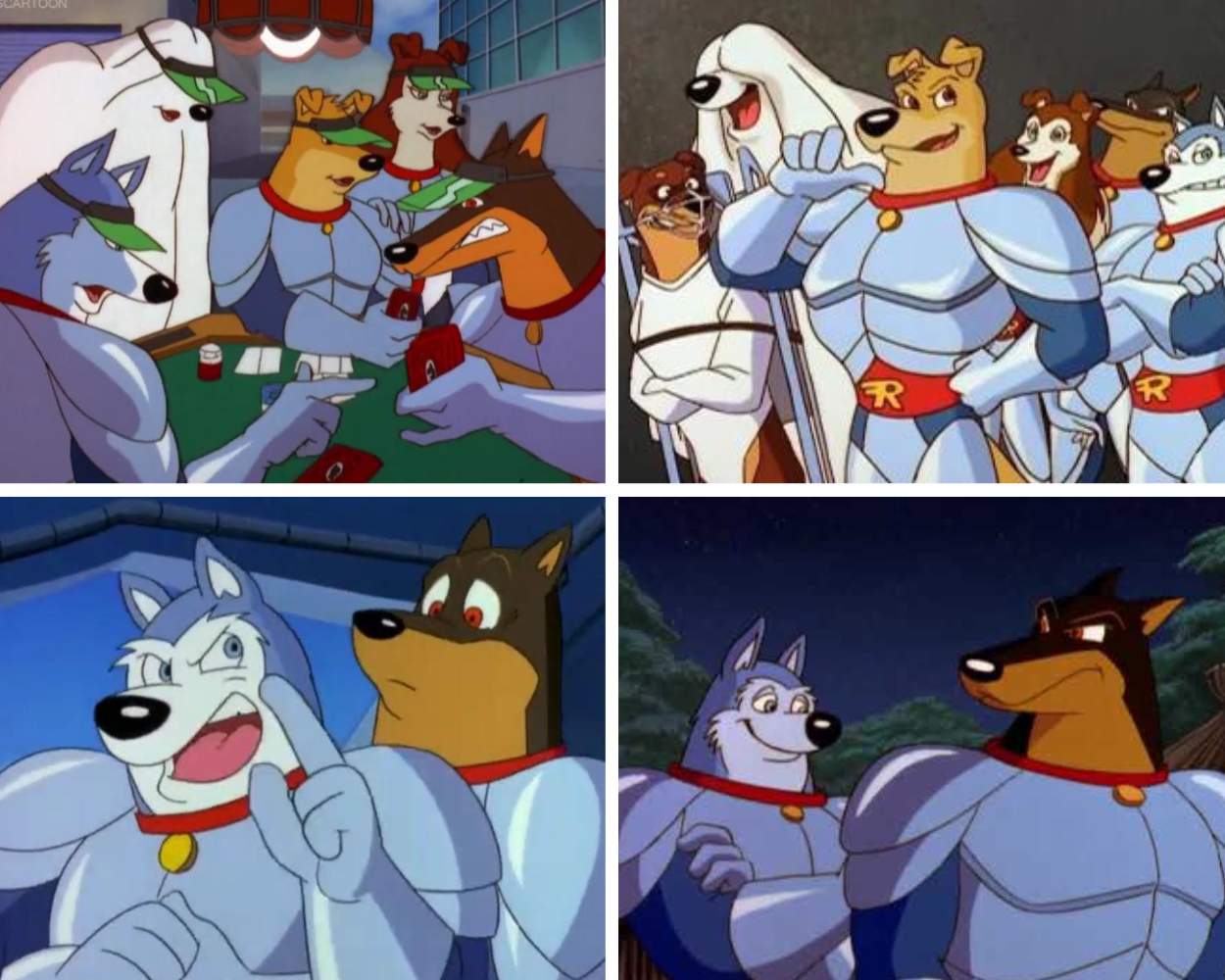
Road Rovers, a fleeting series, revolved around the escapades of a five-member team of heroic anthropomorphic animals who had undergone mutation. An American Goldador, a British Rough Collie, a German Doberman, a Siberian Husky from Siberia, and a Swiss Sheepdog bravely made up these audacious canines.
Road Rovers strived to innovate the classic formula by equipping the main characters with G.I. Joe-style gadgets and having them assume the roles of pets for world leaders when they weren’t busy saving the world. Despite their efforts, Road Rovers couldn’t captivate audiences and faced rapid cancellation.
12Hey Arnold! (1994 -2004)
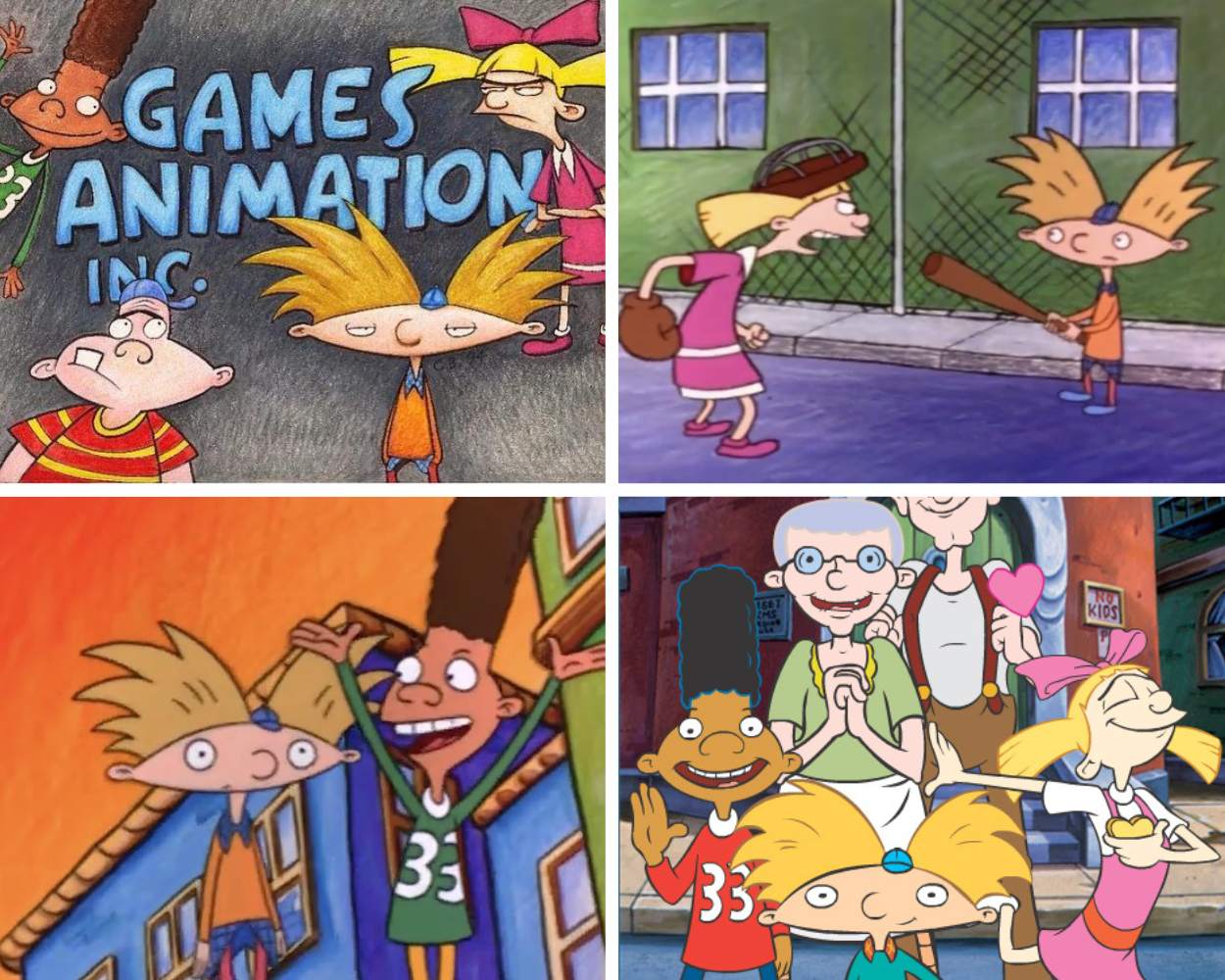
Hey Arnold!, another quality cartoon series from the ’90s, revolved around a young boy residing in the fictitious city of Hillwood, Washington (often mistaken for New York City). The show delved into themes of friendship, family, bullying, and crushes.
Arnold’s unique, close bond with his considerate, eccentric grandparents particularly stood out, as it was unusual for cartoons of that period. In line with many Nicktoons of the decade, it inspired two film adaptations, one in 2002 and another in 2017.
11Bobby’s World (1990 – 1998)
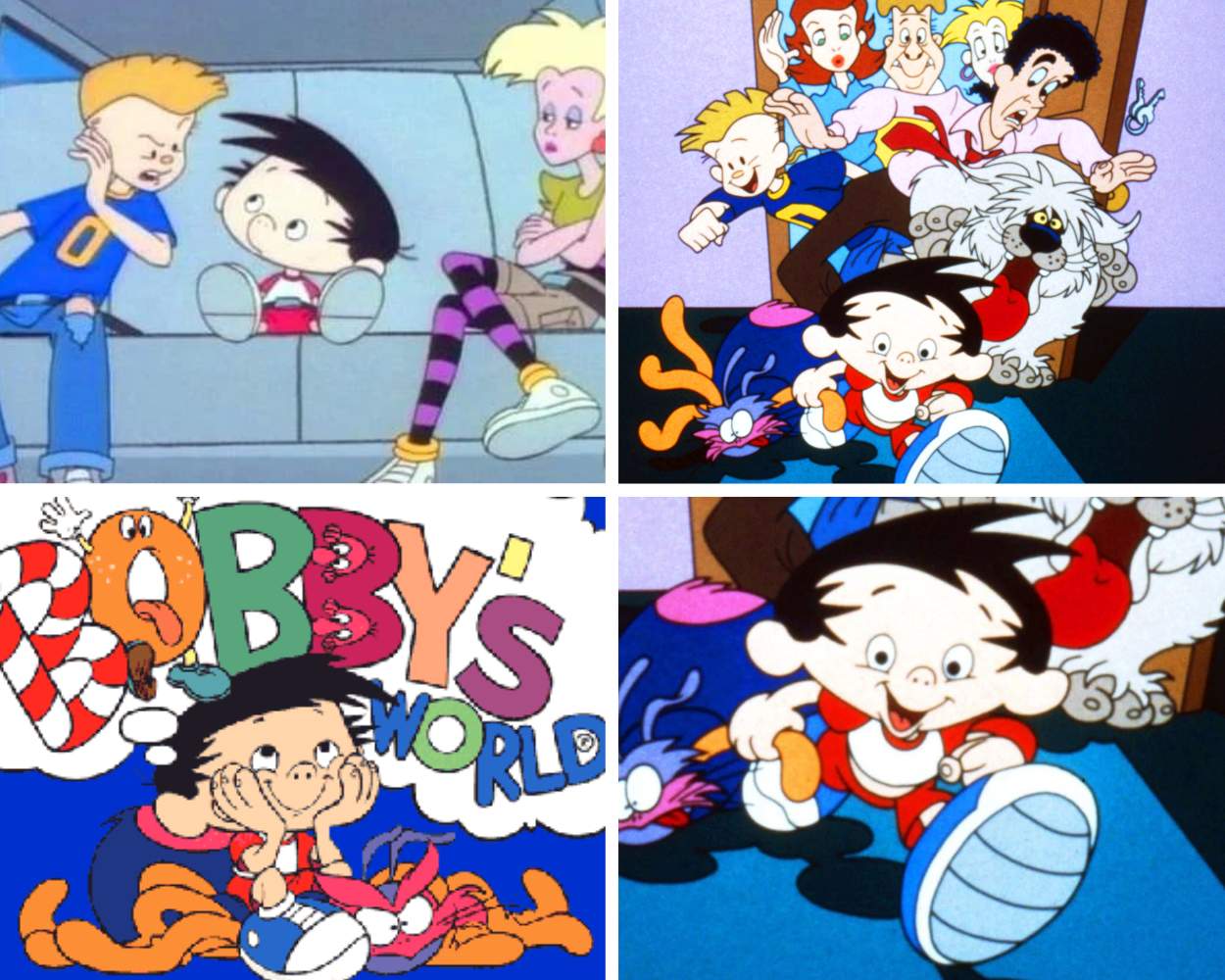
Bobby’s World, a delightful and amusing show about a young boy named Bobby, distinguished itself with a live-action segment at the beginning of every episode.
Furthermore, the intro typically featured a conversation between Bobby and his father, voiced by Howie Mandel. Mandel, known for his role in America’s Got Talent and several popular ’80s movies like Walk Like a Man and Little Monsters, was also the creative force behind this favorite ’90s cartoon, which aired for seven seasons.
10Beetlejuice (1989 – 1991)
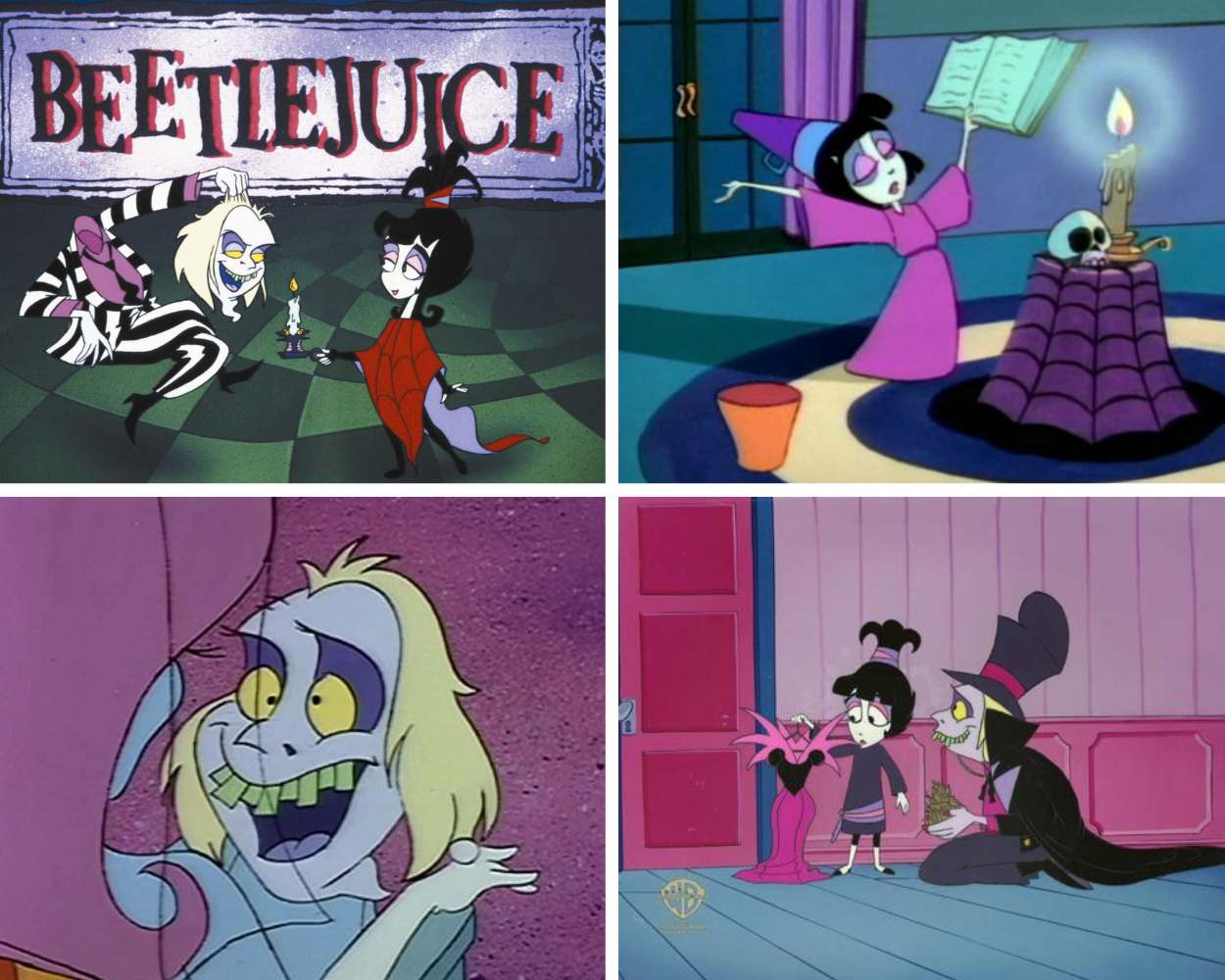
Inspired by the 1988 movie, Tim Burton developed the Beetlejuice animated series, turning Beetlejuice from villain to anti-hero and making Lydia Deetz his inseparable friend.
They explore the peculiar Neitherworld, meeting eclectic characters and engaging in adventurous escapades. Animation granted Beetlejuice ample screen time and unrestricted power use. However, despite its novelty, the series couldn’t achieve the enduring cult following the movie enjoys.
9The Real Adventures Of Jonny Quest (1996 – 1997)
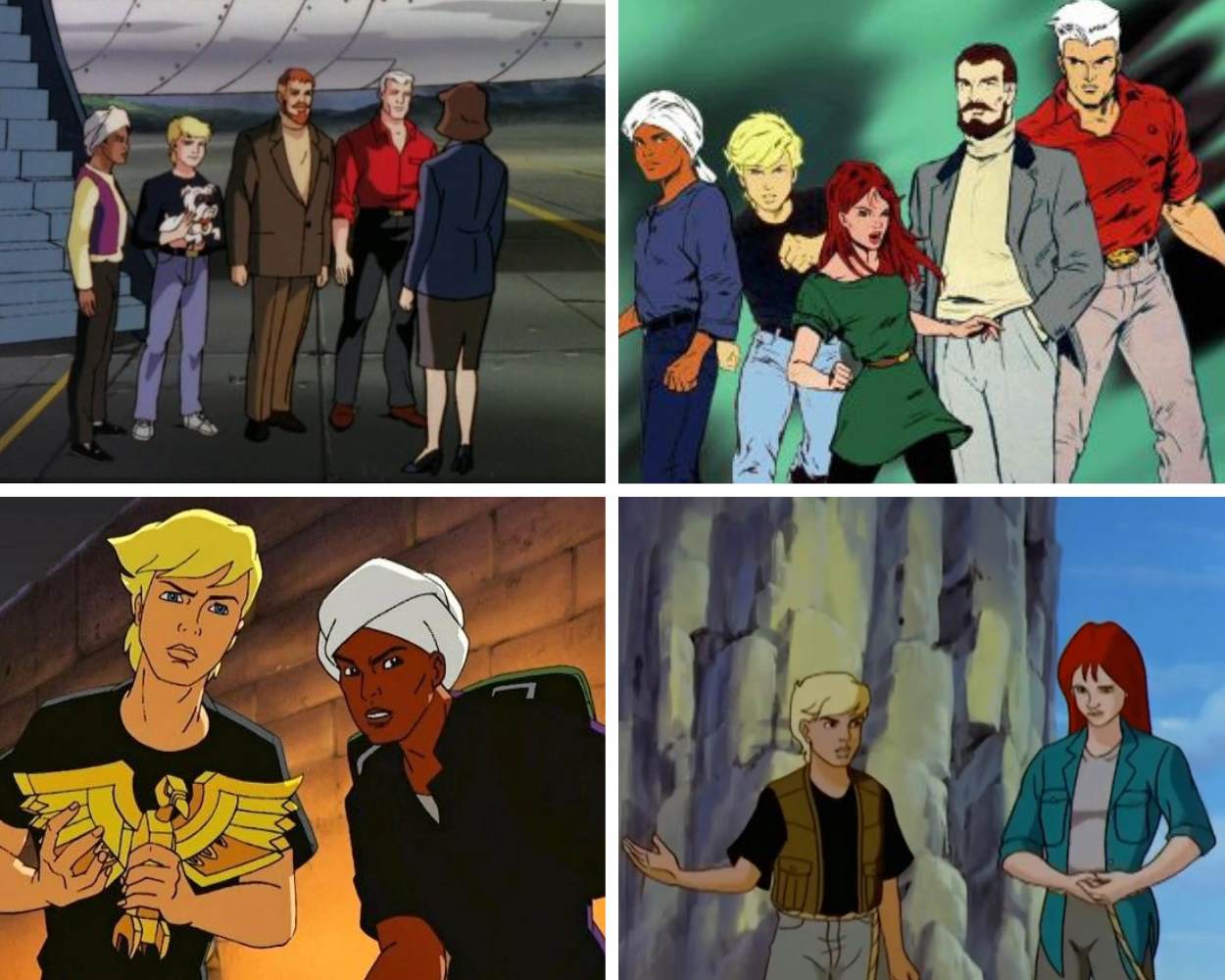
The Real Adventures of Jonny Quest continues the narrative of the 1964 series Jonny Quest, showcasing teenage iterations of Jonny, Jessie, and Hadji. Alongside revamped versions of the classic cast, they grapple with real-world mysteries, legends, and paranormal events.
Although Real Adventures showed potential for success, it hit a snag when the original creator left after the first season and character designs underwent revisions to resemble the original versions more closely. Critics claimed it was too intense for kids, which led to its struggle to engage its target audience and resulted in unsold merchandise.
8The Magic School Bus (1994 -1997)
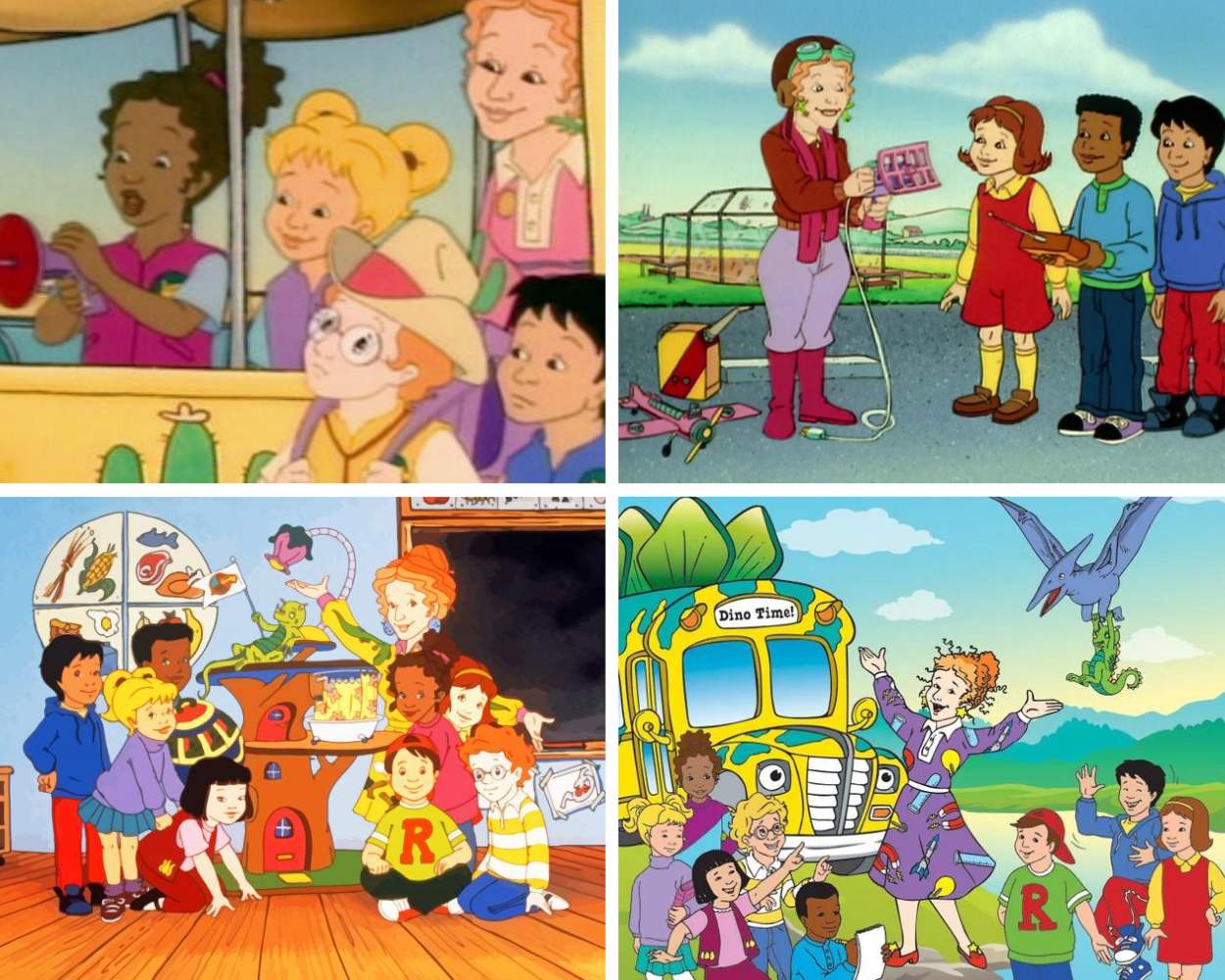
Who could resist learning about science while journeying on the Magic School Bus with Miss Frizzle?
Originating from a book series, it transitioned into a popular 90s PBS cartoon show, educating young viewers about diverse topics from molecules, stars, and computers, to the human body. Netflix breathed new life into The Magic School Bus in 2017, rebooting it as The Magic School Bus Rides Again.
7Doug (1991 – 1999)
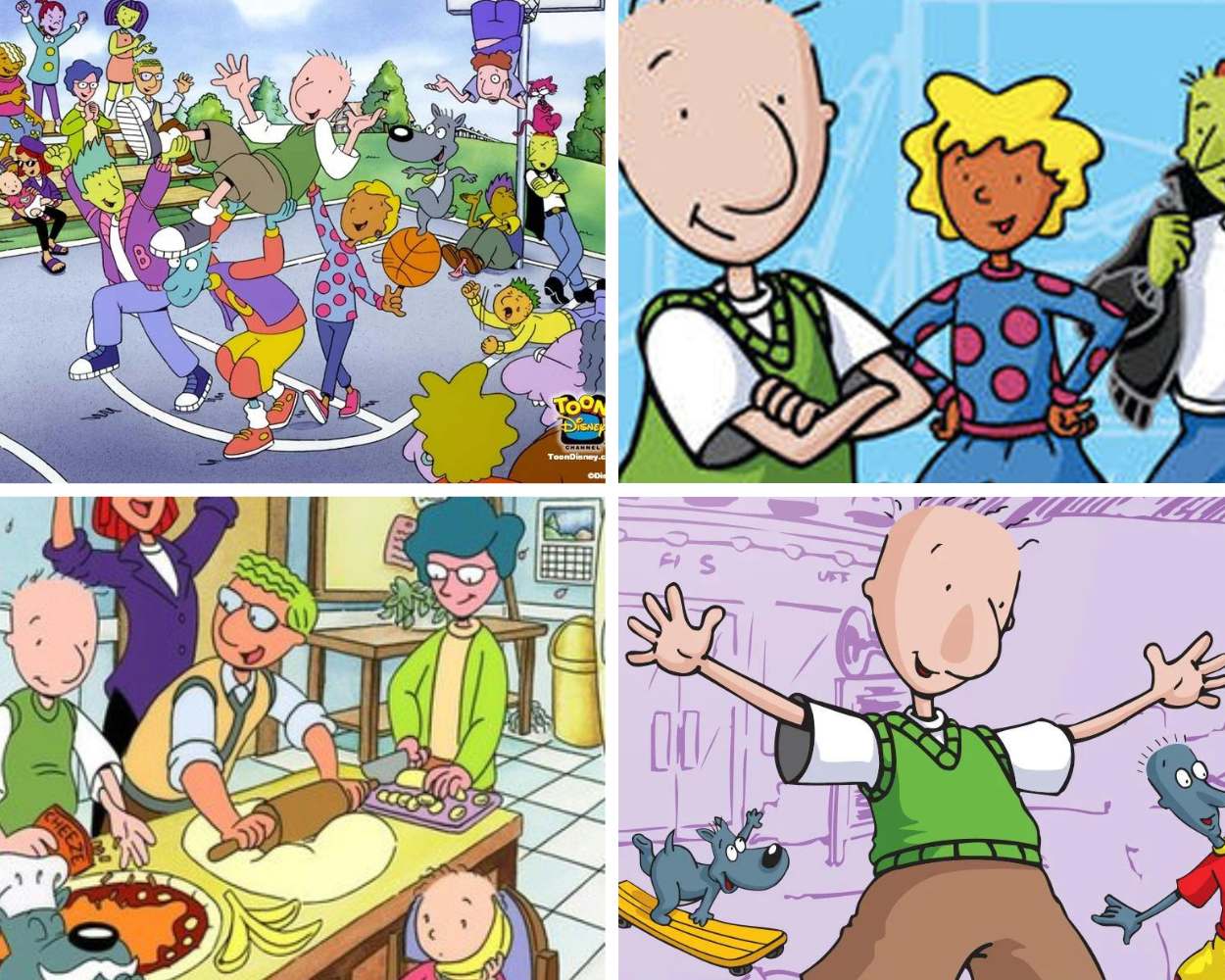
Doug became a defining icon of Nickelodeon’s early-’90s golden era of animation. In many aspects, Doug, voiced by Billy West and Tom McHugh, resembled a ’90s Charlie Brown, with nuances of Charles Schulz’s comic classic. However, unlike Charlie Brown, Doug did win the heart of his dream girl, Patti Mayonnaise, voiced by Constance Shulman.
The show took a slice-of-life approach, resonating with its young audience as it explored the experiences of being the new kid in a new town and school. It courageously tackled themes such as bullying and self-esteem, creating a relatable and engaging storyline for its viewers.
6Street Sharks (1999 – 2002)
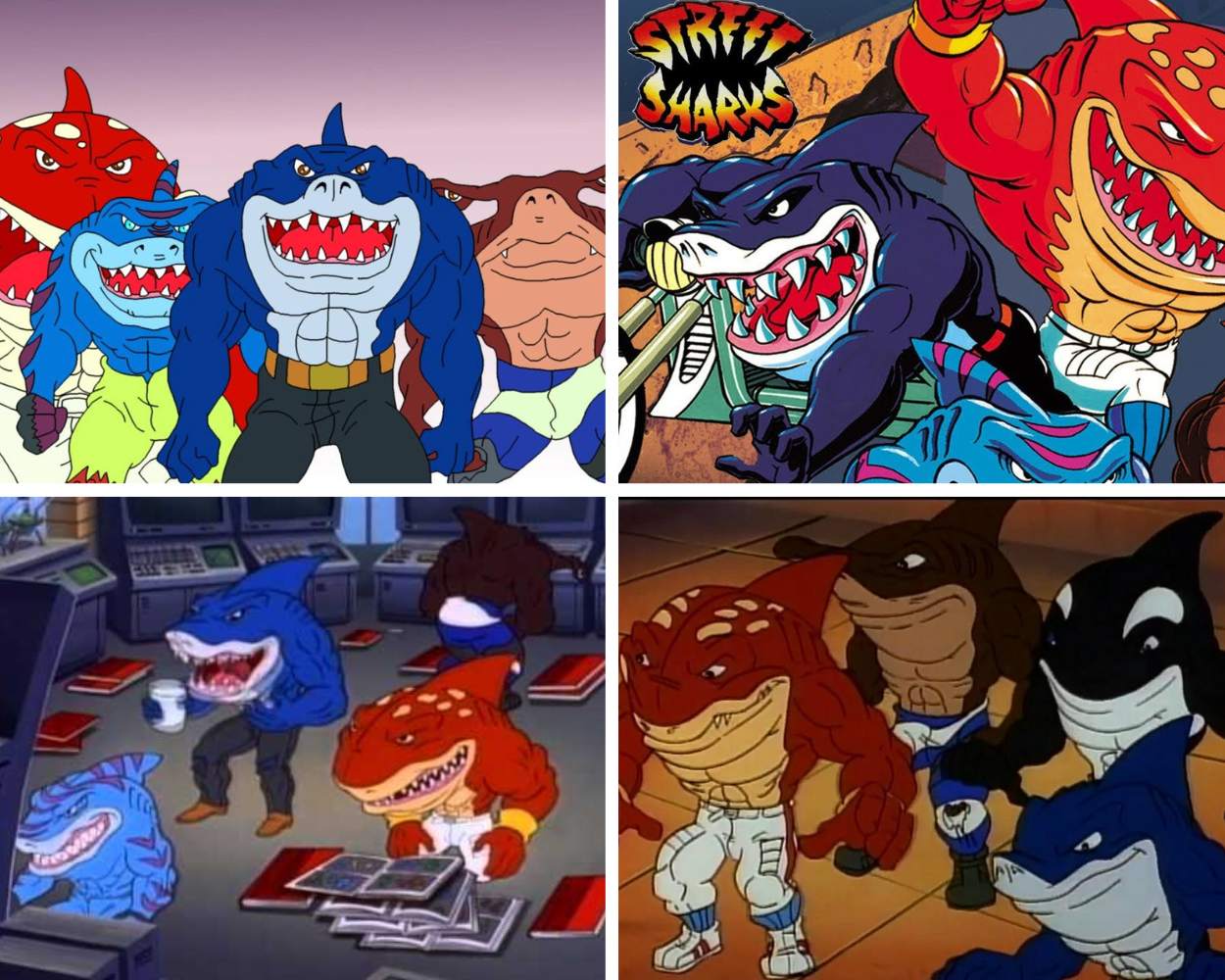
Street Sharks, a peculiar action-comedy series, narrates the tale of four brothers, Ripster, Jab, Streex, and Slammu. After exposure to a device known as “the gene-slammer,” they transform into towering, muscular hybrids of men and sharks. They dedicate their time to combating the evil scientist Dr. Paradigm and his monstrous creations.
Mattel designed this series to market its toy line bearing the same name. On a brighter note, a young Vin Diesel played a role in promoting it, which certainly adds a dash of celebrity appeal.
5Gargoyles (1994 – 1997)
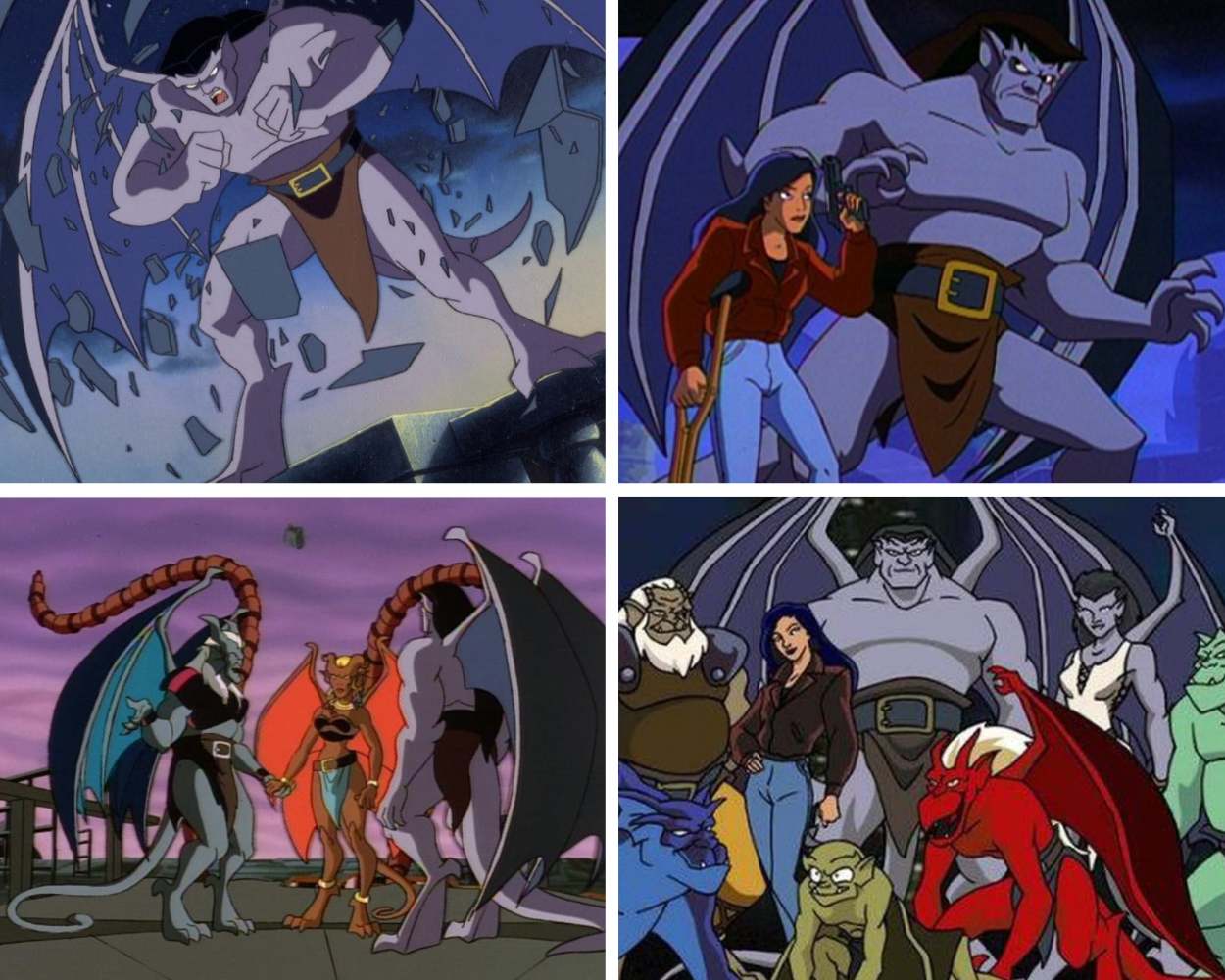
“Gargoyles” soared above the typical ’90s cartoon skyline, dazzling with its noir elegance and brainy narratives, and here’s the stone-cold scoop:
- A show chiseled with depth: shadowy aesthetics, complex characters, and adult themes.
- Drew wisdom from Shakespeare, spun tales with Arthurian and Scottish lore, and didn’t myth out on mythology.
- Tackled real-world issues like gun safety and discrimination – no sugar-coating here.
- Gave us David Xanatos, the blueprint for the ‘Xanatos Gambit,’ where every outcome is a win.
- Deserves a trophy on the animated series mantle for transforming the landscape of cartoons.
This show didn’t just break the mold; it smashed it to gargoyles!
4Animaniacs (1993 – 1998)
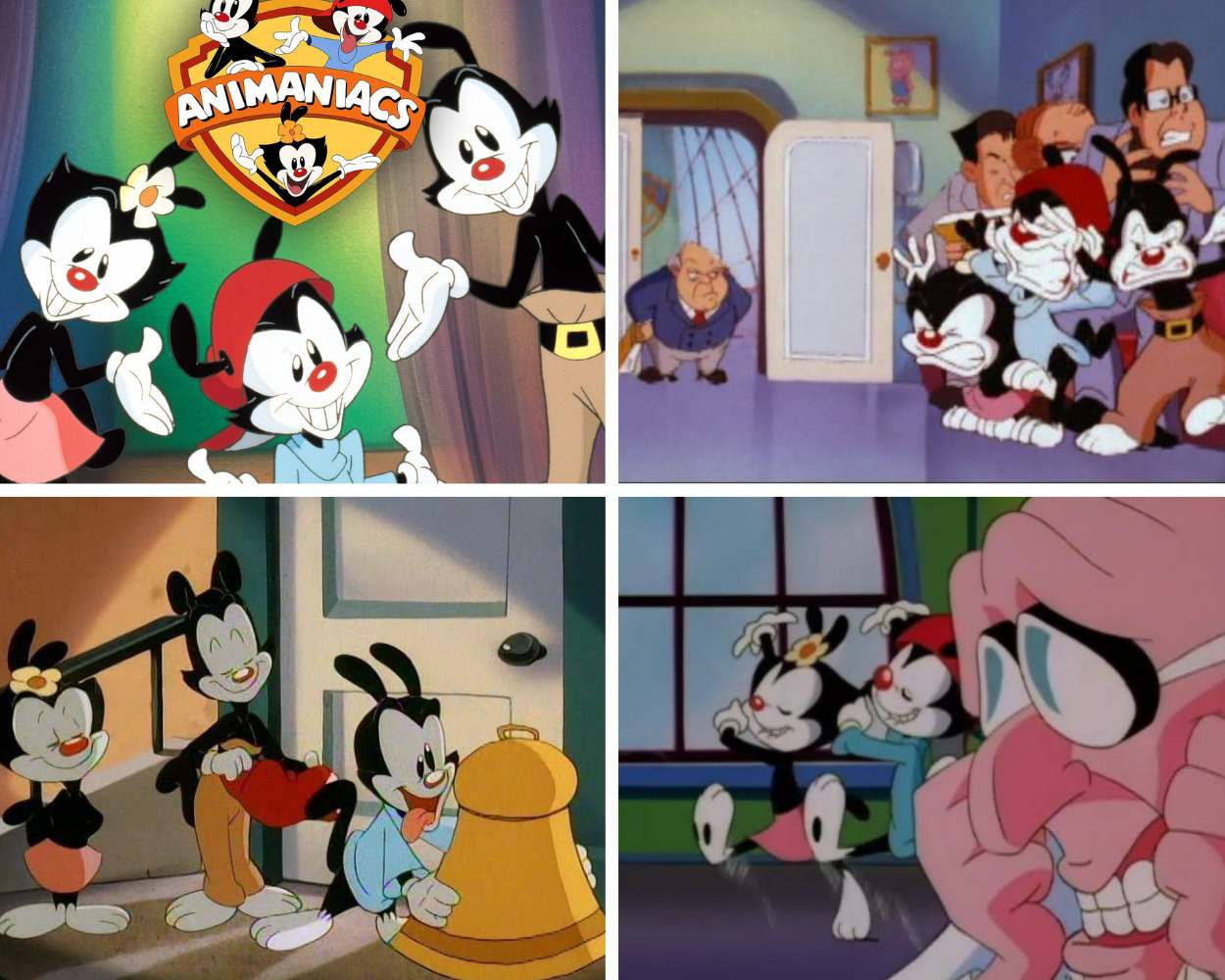
Steven Spielberg’s Animaniacs graced The WB with its presence for five seasons, long before its 2020 Hulu reboot. It was an animated show in an era dominated by live-action children’s variety shows like All That and The Amanda Show.
Each Animaniacs episode featured three mini skits and starred diverse characters. However, the characters that left the most significant imprint were Yakko, Wacko, and Dot. These characters, resembling red-nosed mice of an unidentified species, were known for memorably initiating each episode by singing the theme song in the WB tower.
3ReBoot (1994 – 2002)
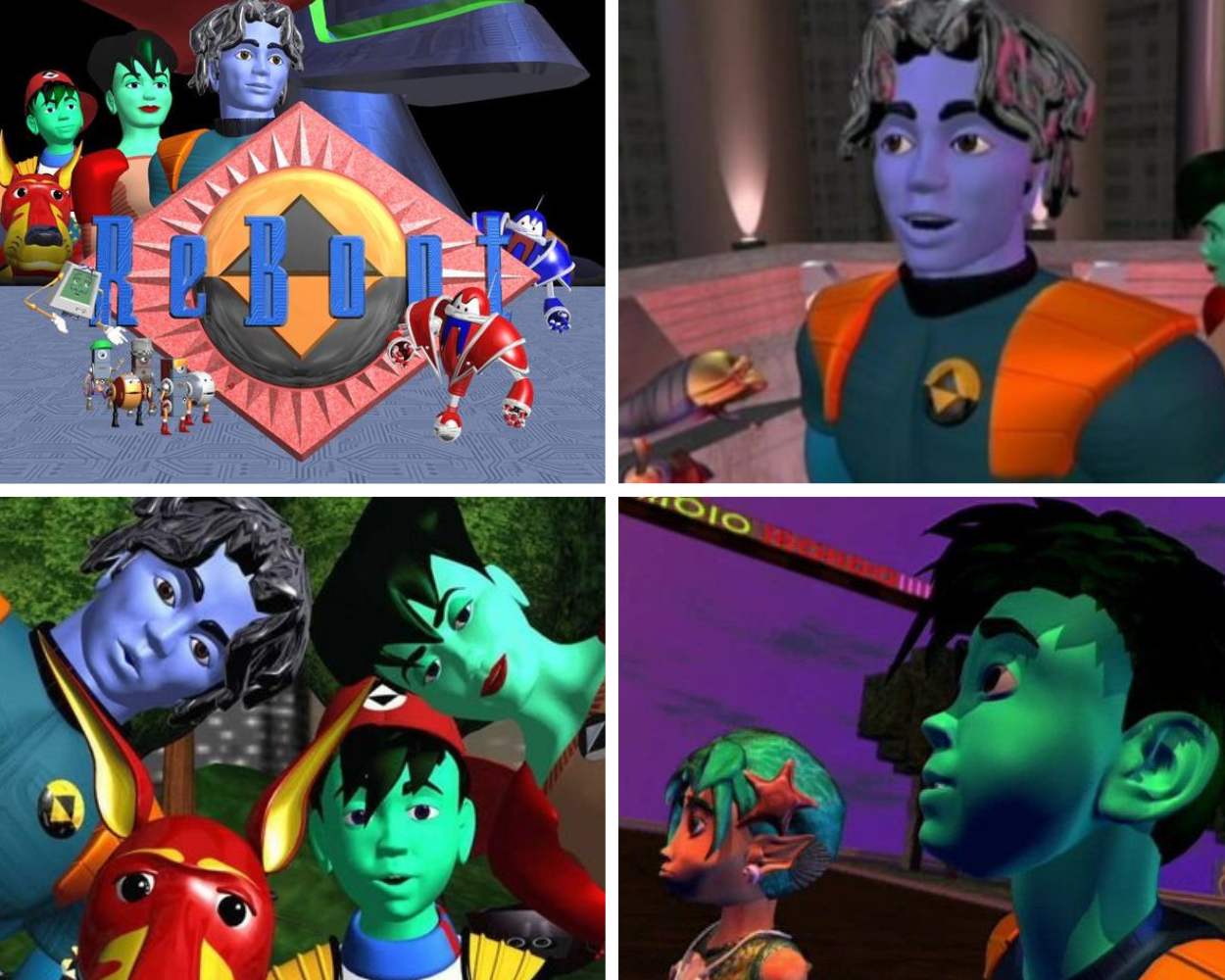
“ReBoot,” a trailblazer as the first fully computer-animated TV show, plugged viewers into the digital escapades of Bob and the Mainframe crew, now for a byte-sized breakdown:
- Set inside a PC, it’s the story of its digital denizens’ battle against villainous viruses, Megabyte and Hexadecimal.
- Started with a chipper vibe, but downloaded a darker, edgier update in season three.
- Enzo, the bytesize joker, upgraded to “Matrix,” a brooding anti-hero, to reboot viewer interest.
- Often just a ghost in the machine of ’90s nostalgia, yet ReBoot’s impact on the digital domain remains significant.
Let’s click ‘refresh’ on this piece of pixelated pioneering!
2Mutant League (1994-1996)
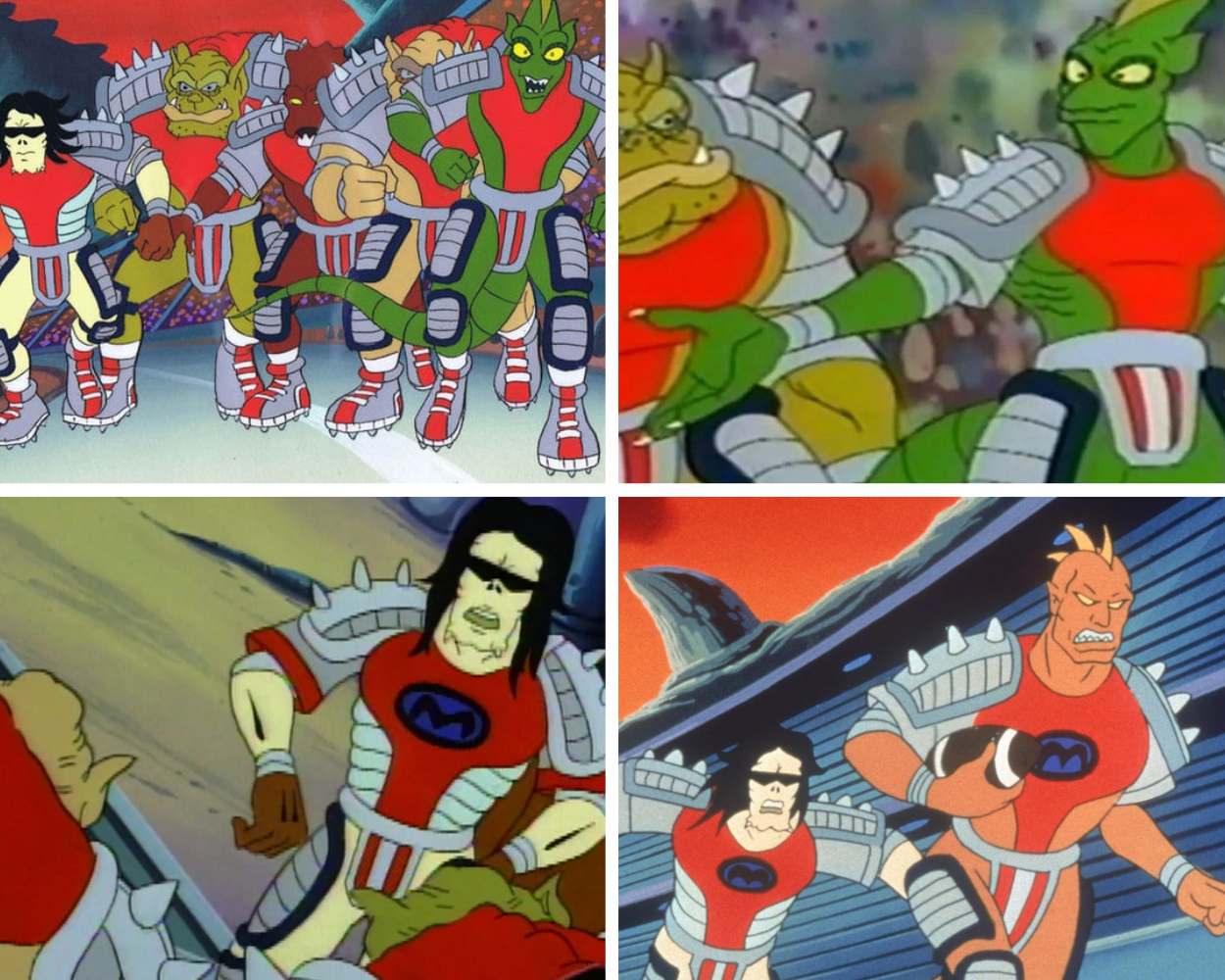
Surprisingly, the Sega Genesis games Mutant League Football and Mutant League Hockey inspired a cartoon series featuring protagonist Bones Justice. He embarks on a journey to uncover the truth about his father by joining a professional mutant football team, the Midway Monsters.
The first season, packed with diverse plotlines and lacking continuity, presented a chaotic picture. However, the second season adopted a more solemn tone. Today, only adult fans of the games or those lucky enough to catch a few episodes on TV remember the crazy, gory, and cheesy adventures of the pumped-up mutant athletes.
1Rugrats (1991 -2004)
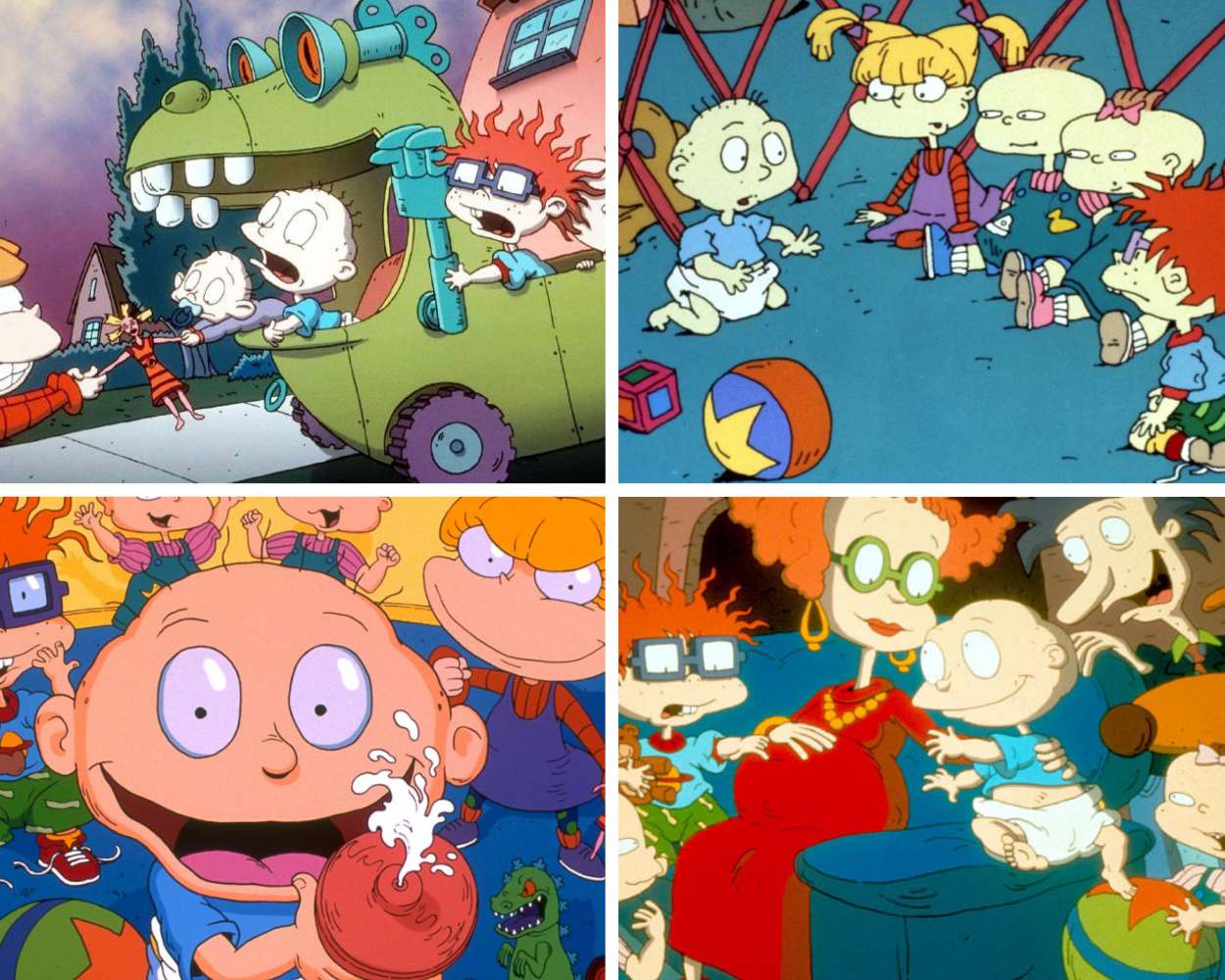
“Rugrats” had tots Tommy, Chuckie, Phil, Lil, Susie, and bossy Angelica show us the ropes of infant ingenuity, with some diaper-dandy details:
- Nickelodeon’s gem that debuted in ’91 and ran until 2004, teaching us the toddler tenet: “a baby’s gotta do what a baby’s gotta do.”
- Sparked a series of giggle-inducing films.
- 2021 brought a Paramount+ reboot, diapering a new era with its charm.
- Looking for laughs? The cartoon cupboard is still full!
So, dust off your pacifiers, because the ‘Rugrats’ are back, and they’re crawling into the future!